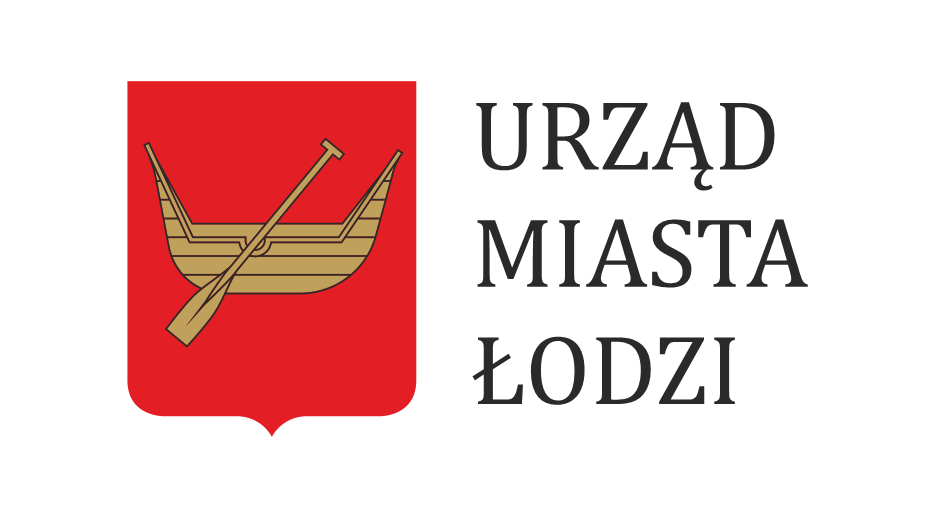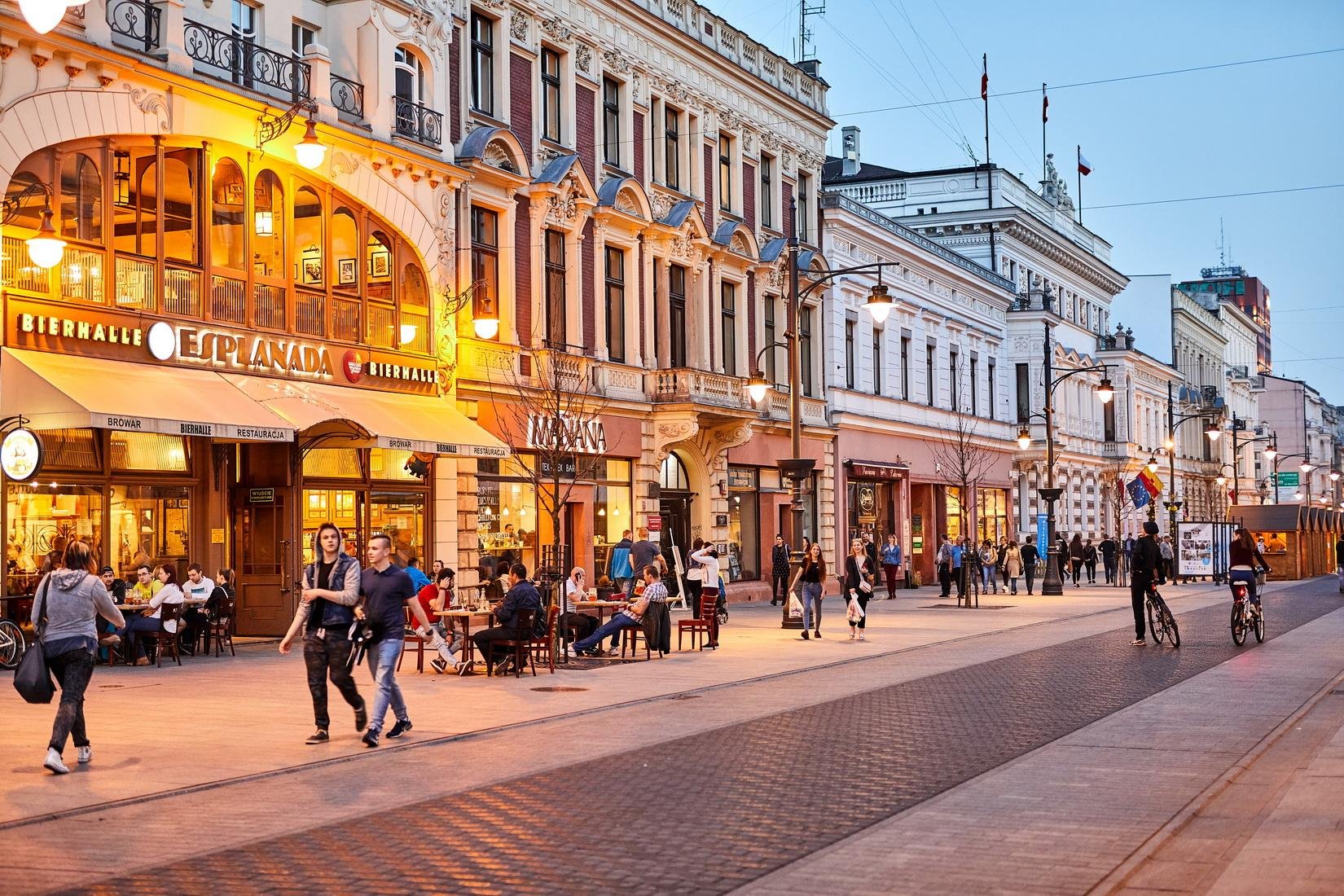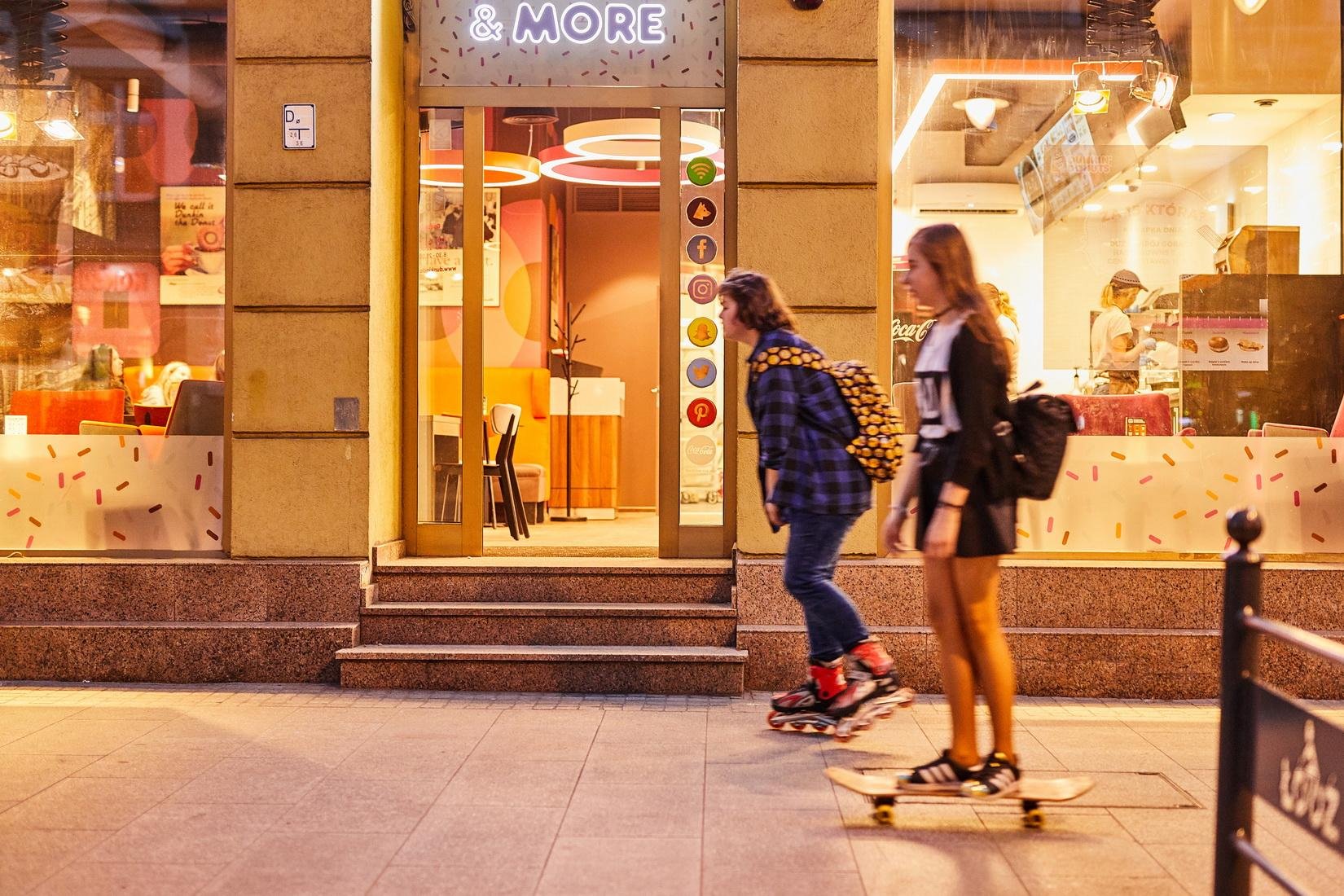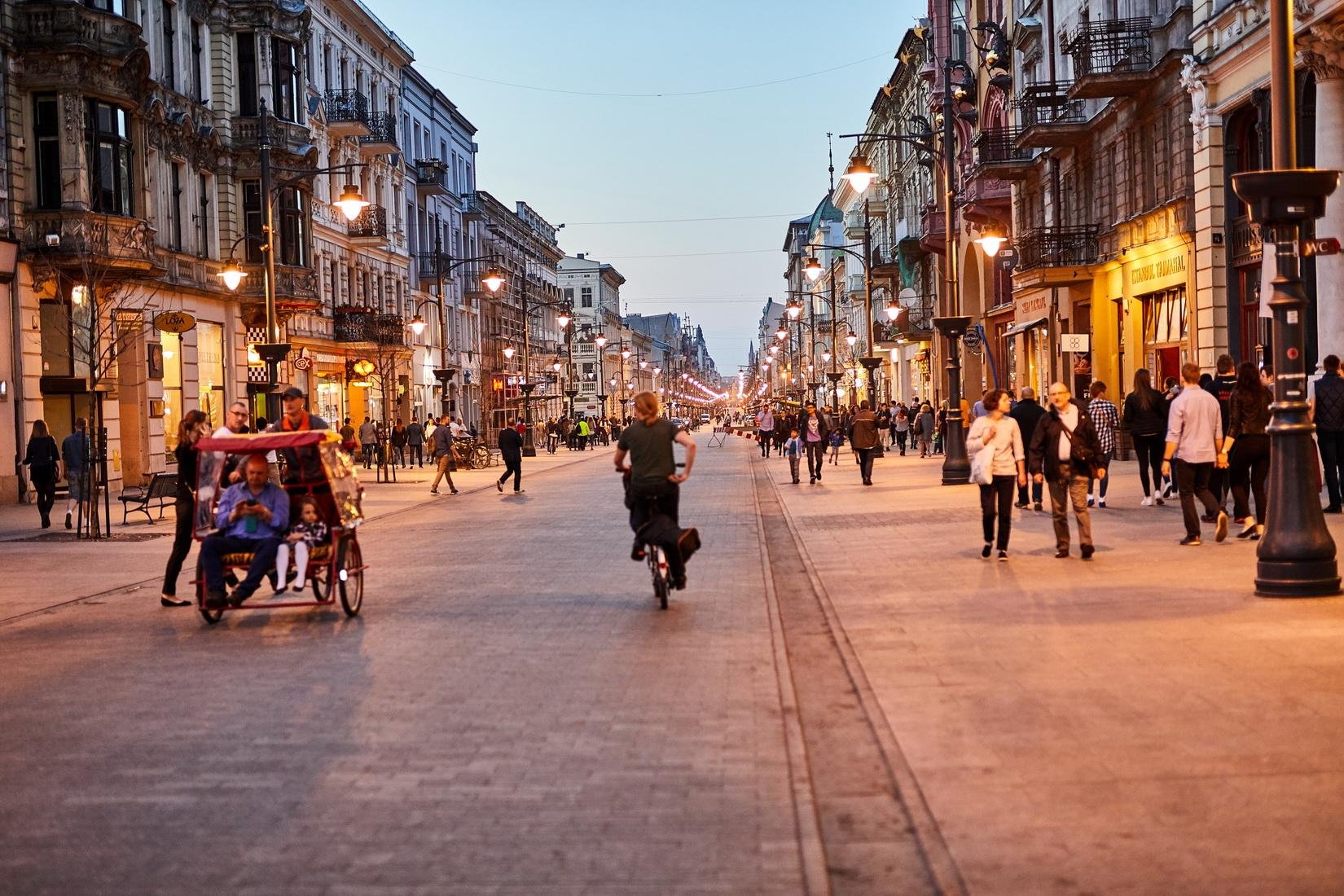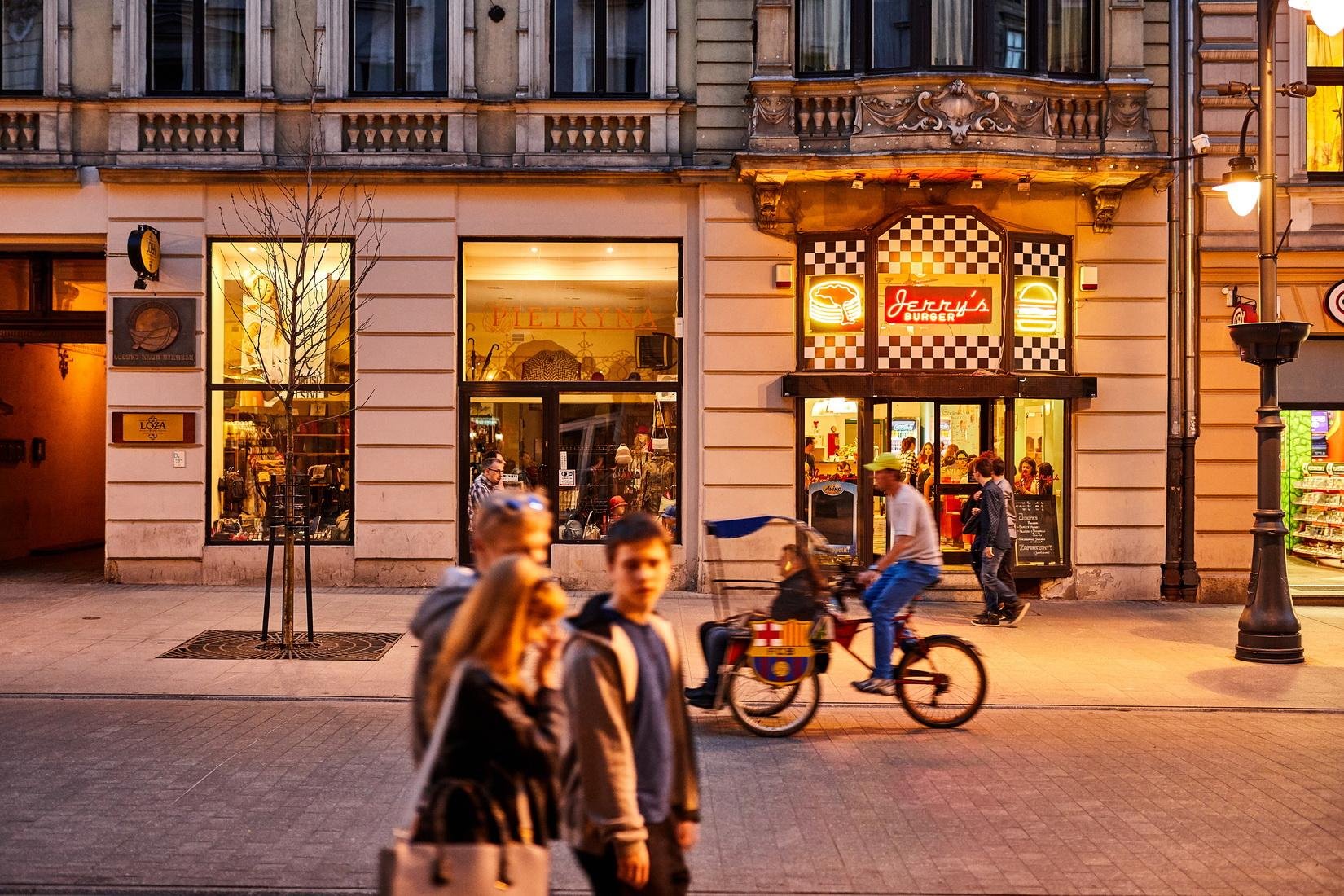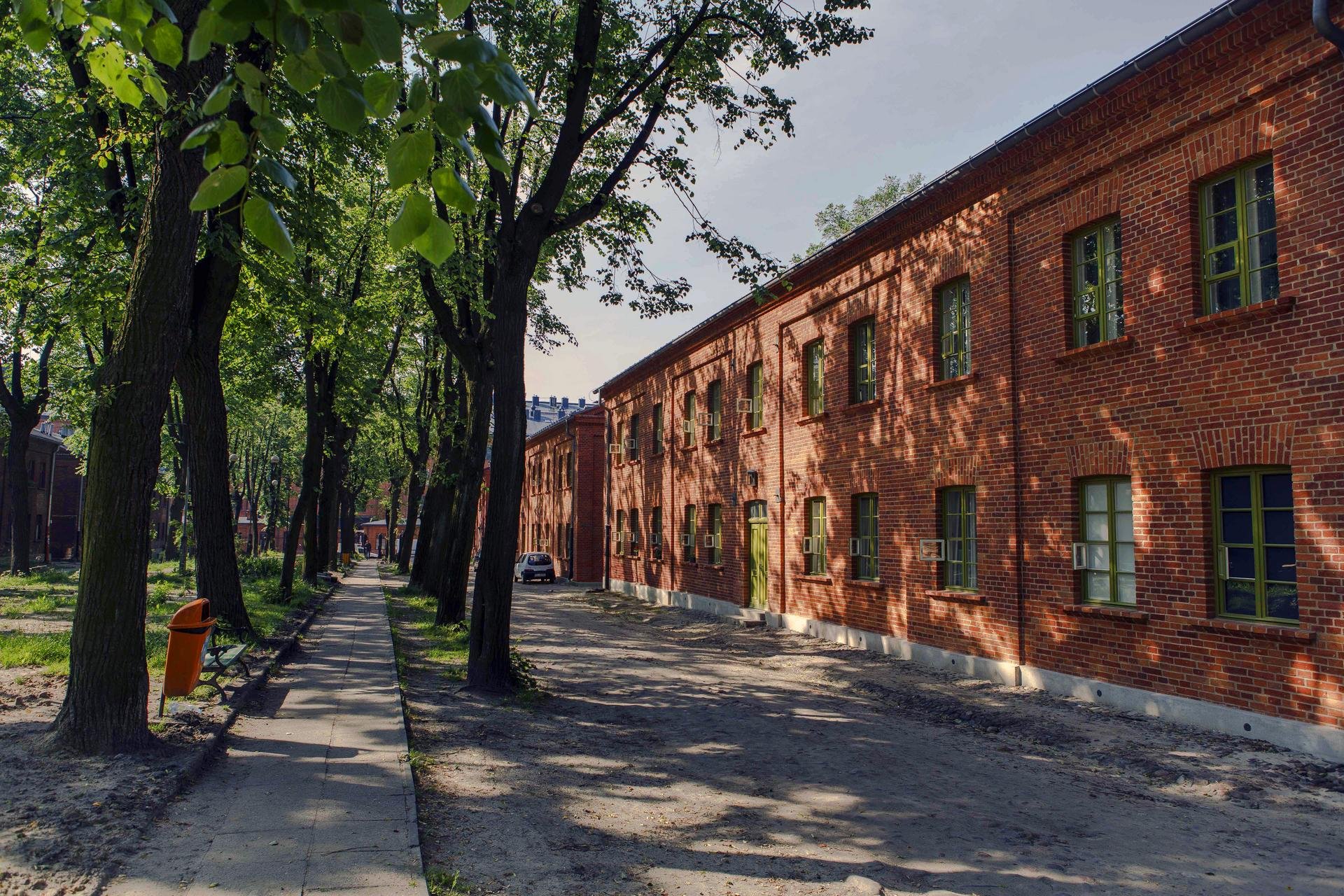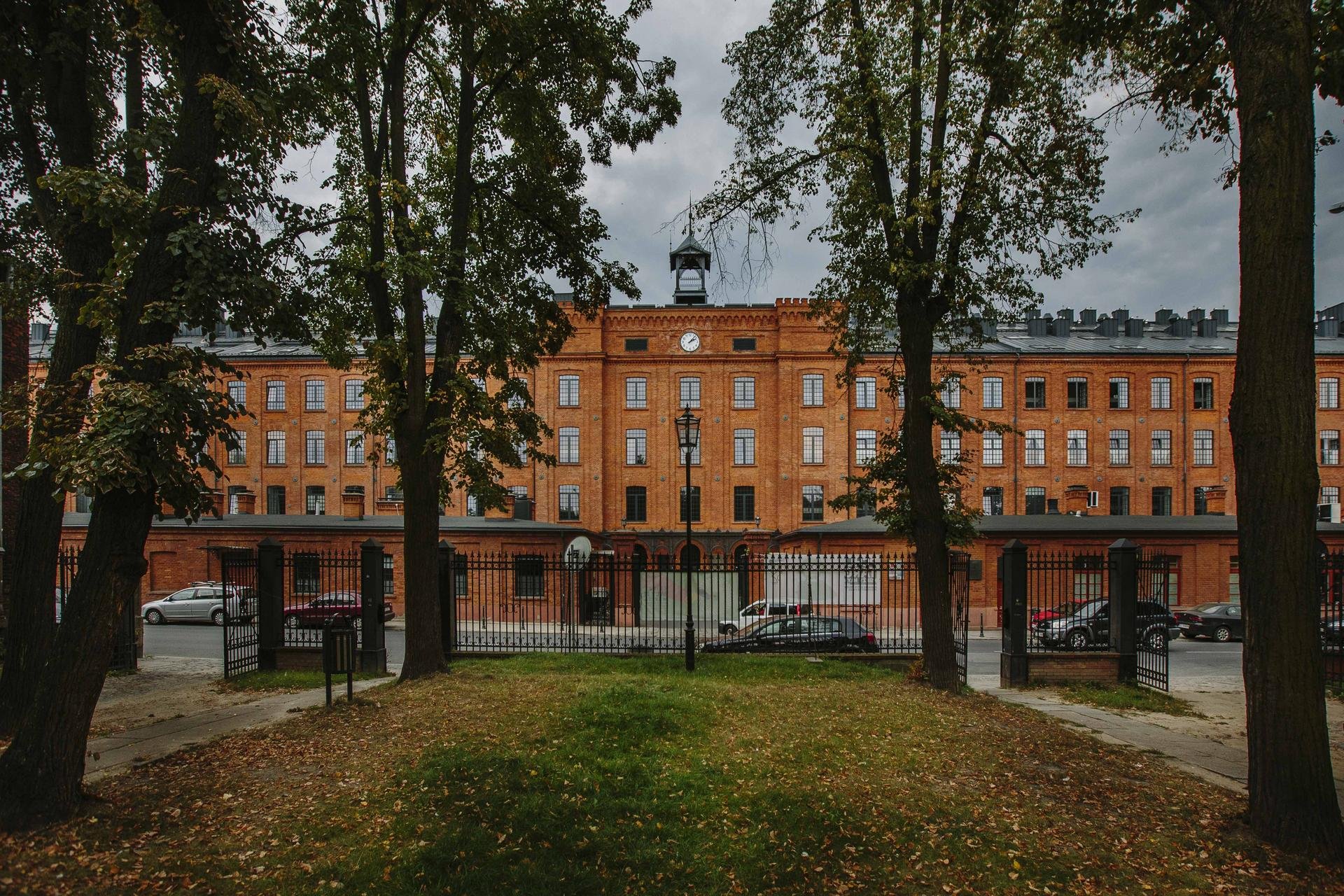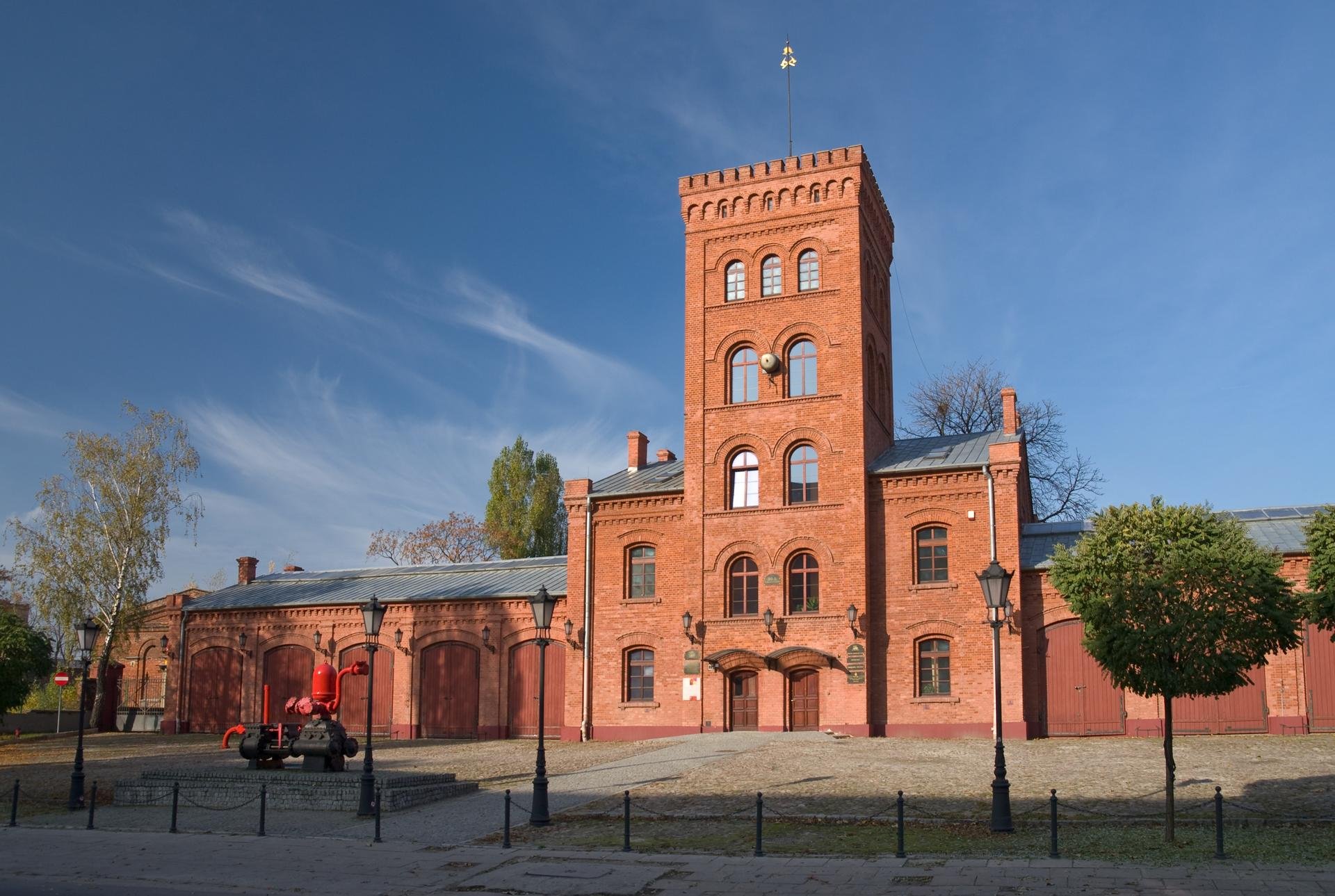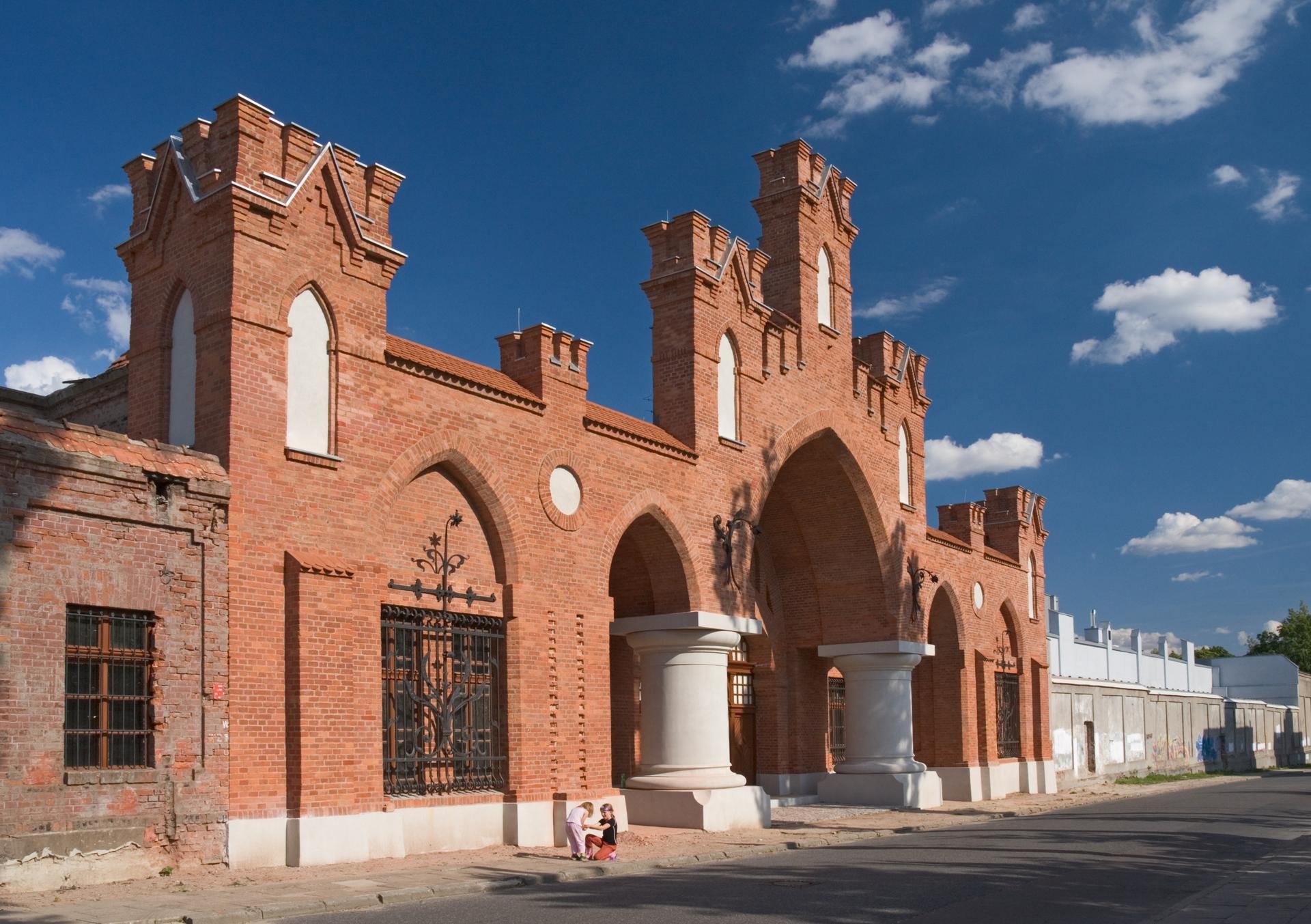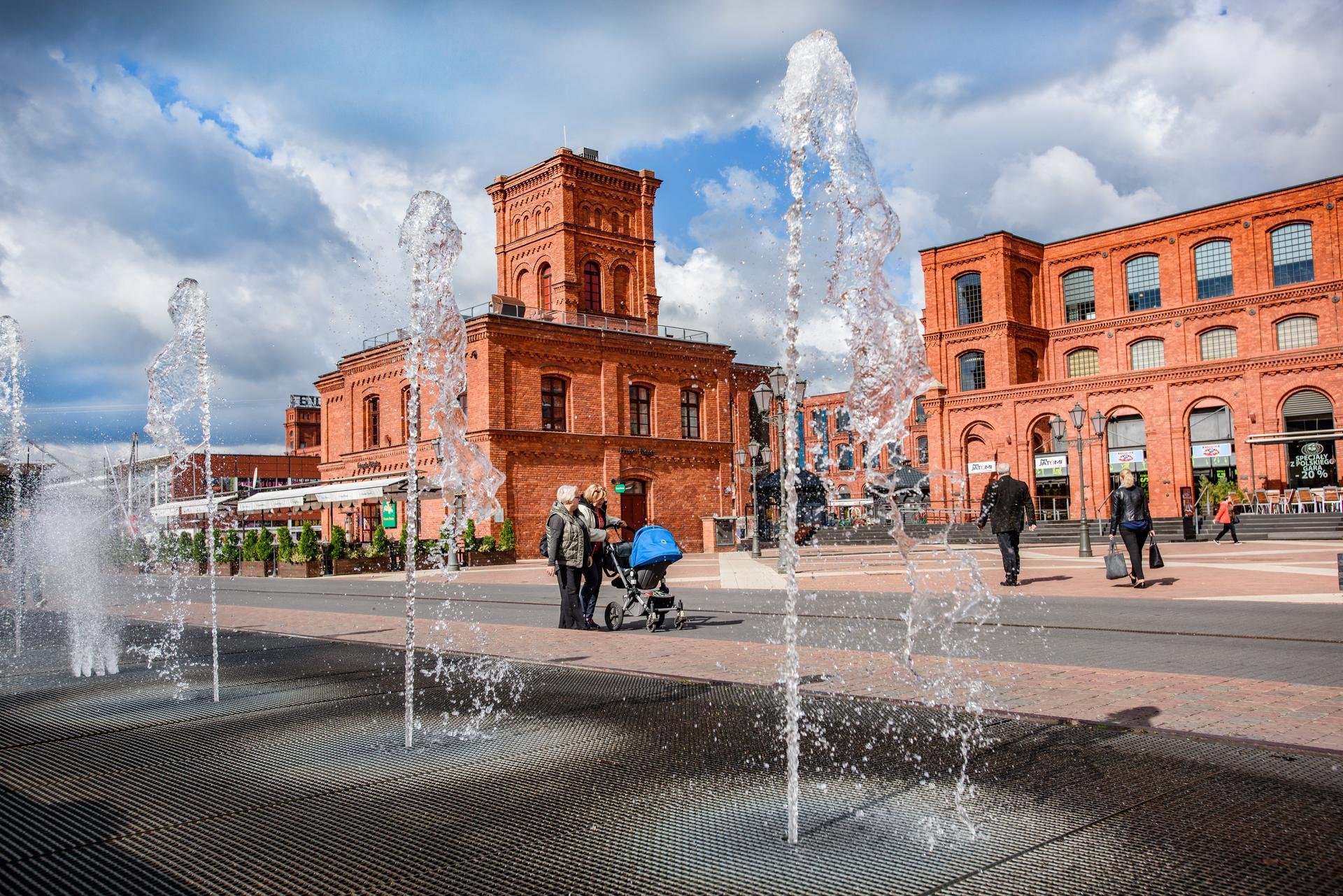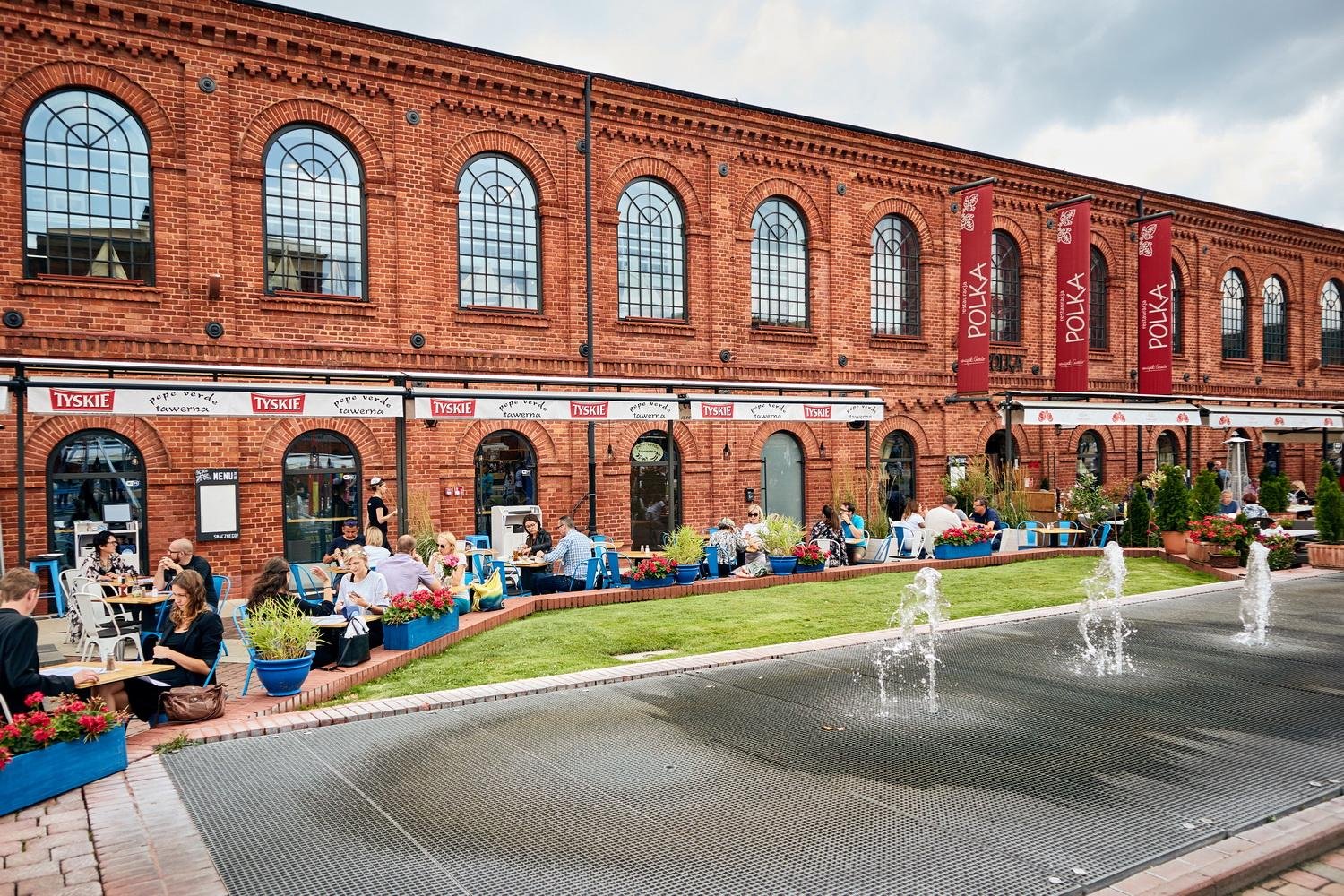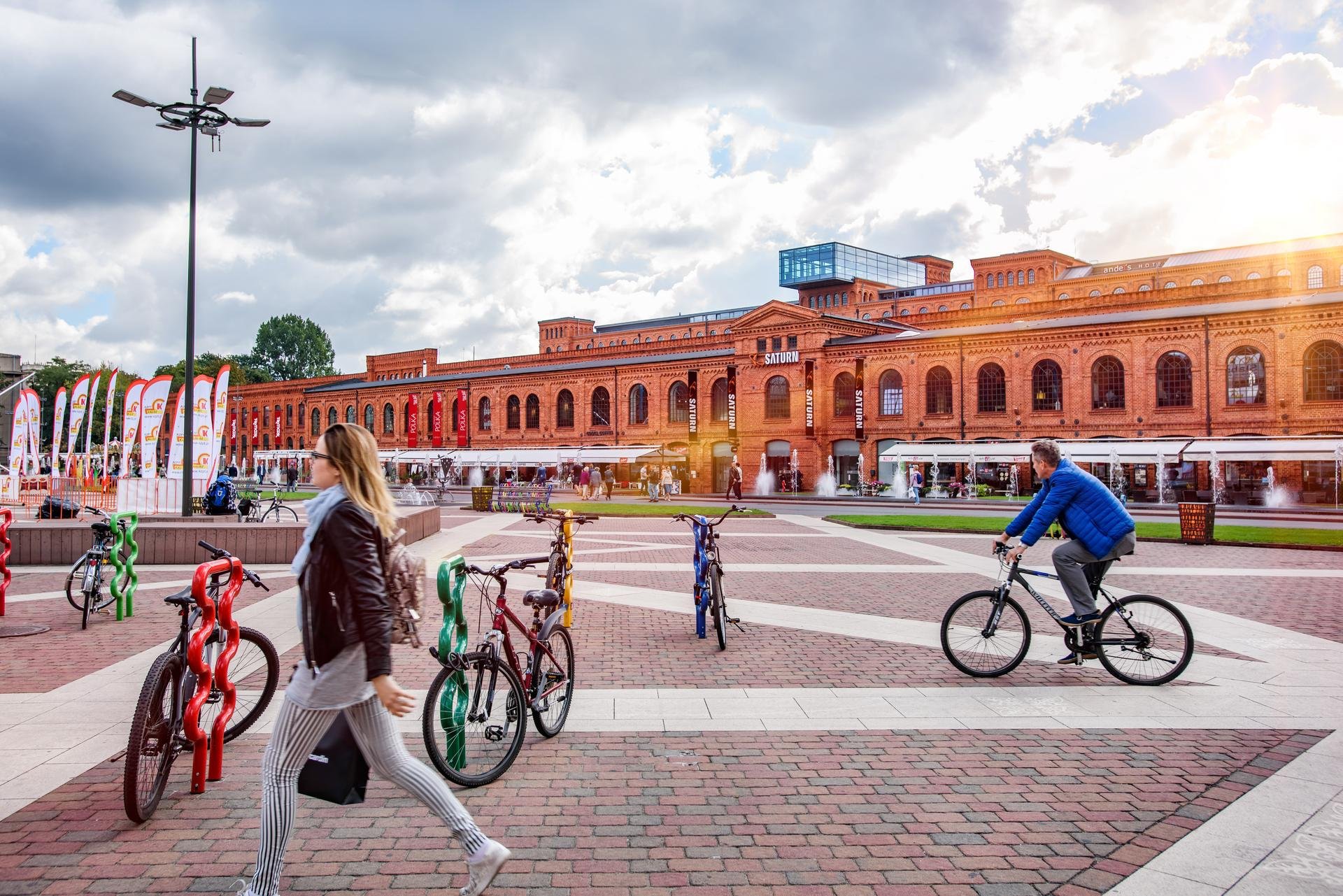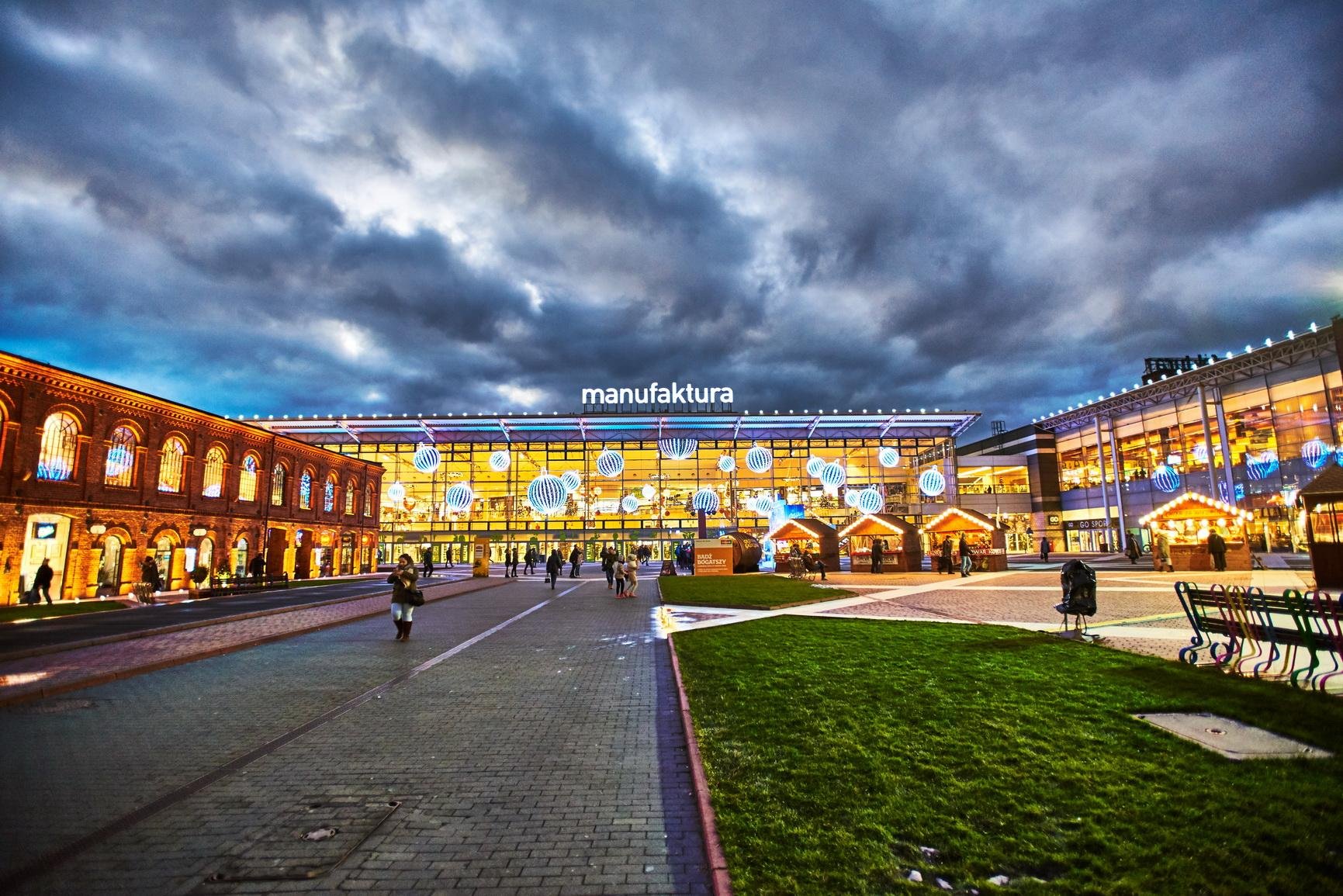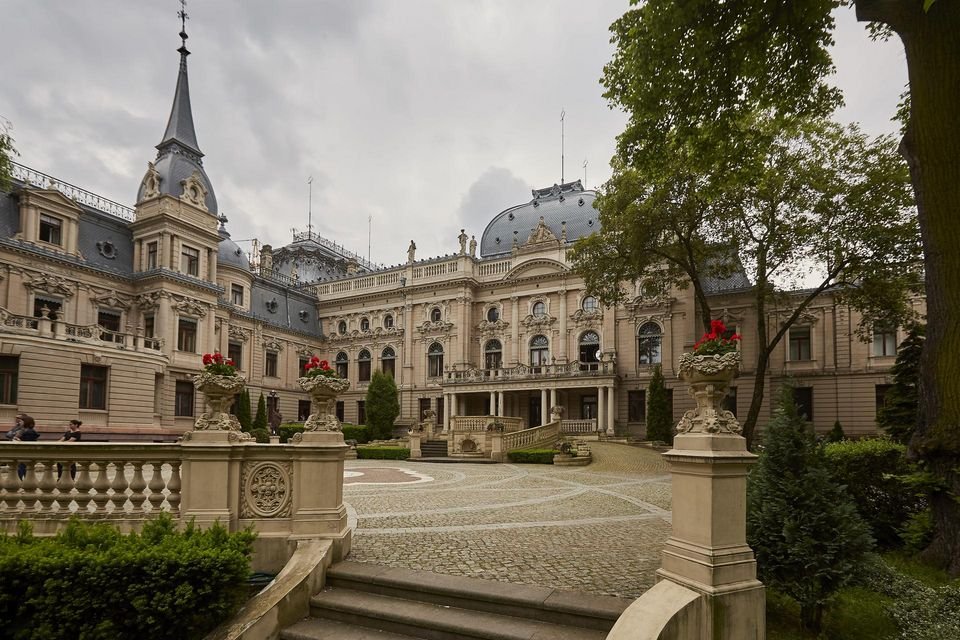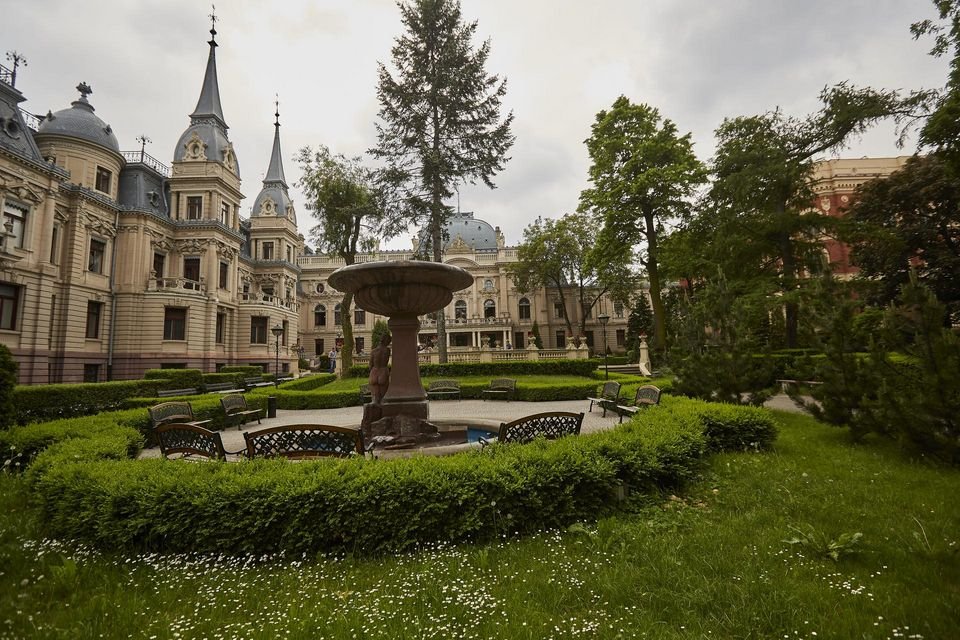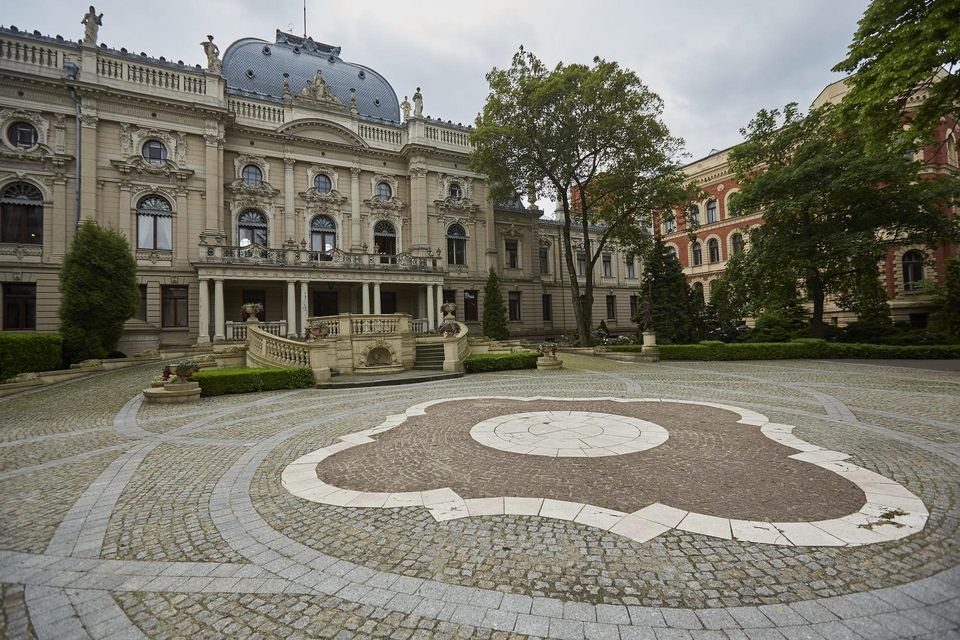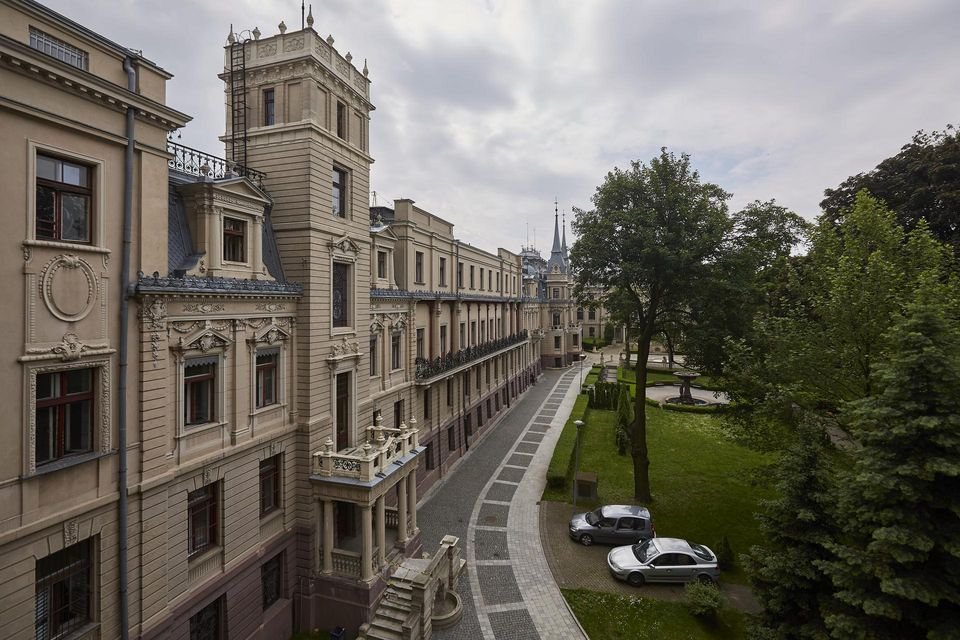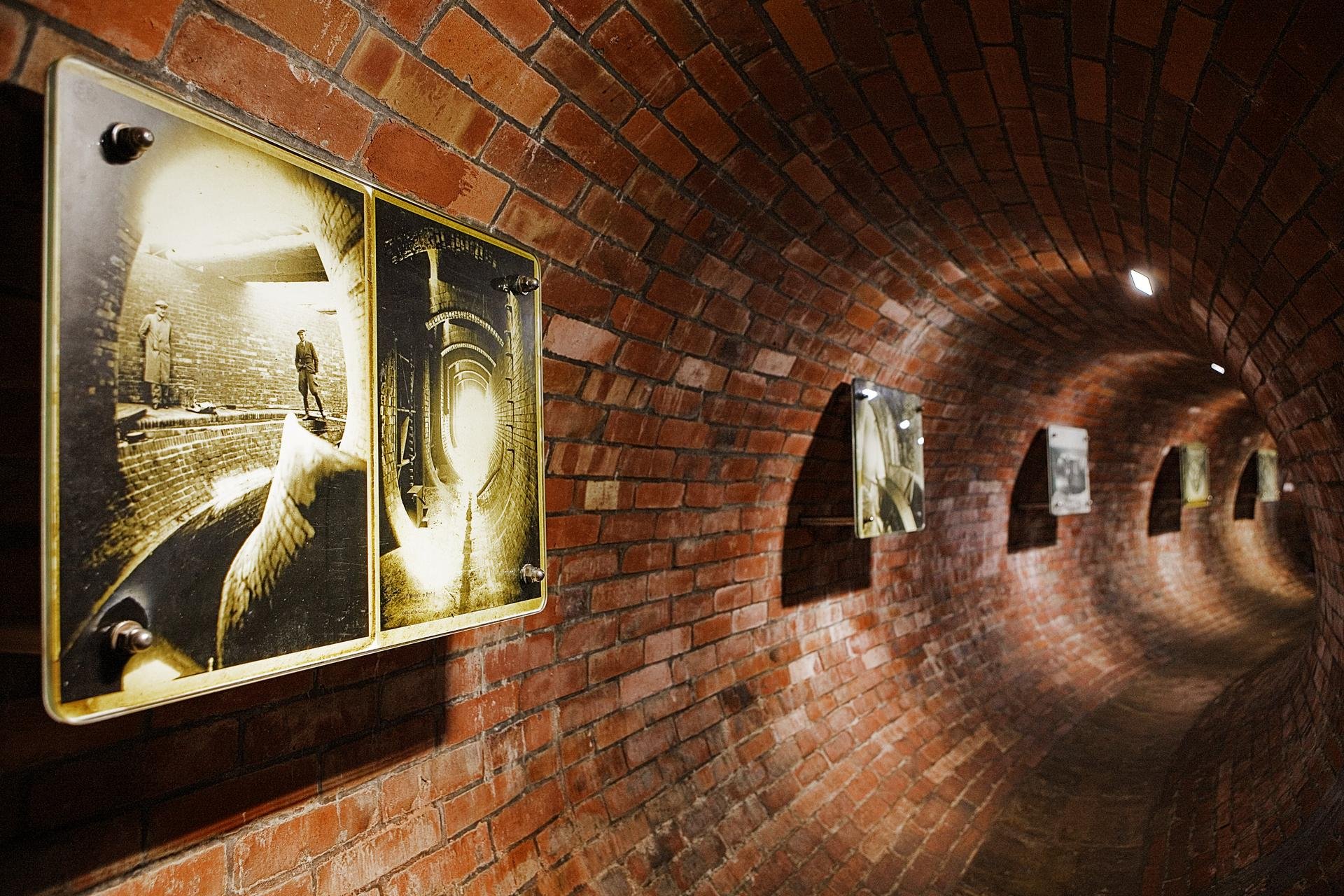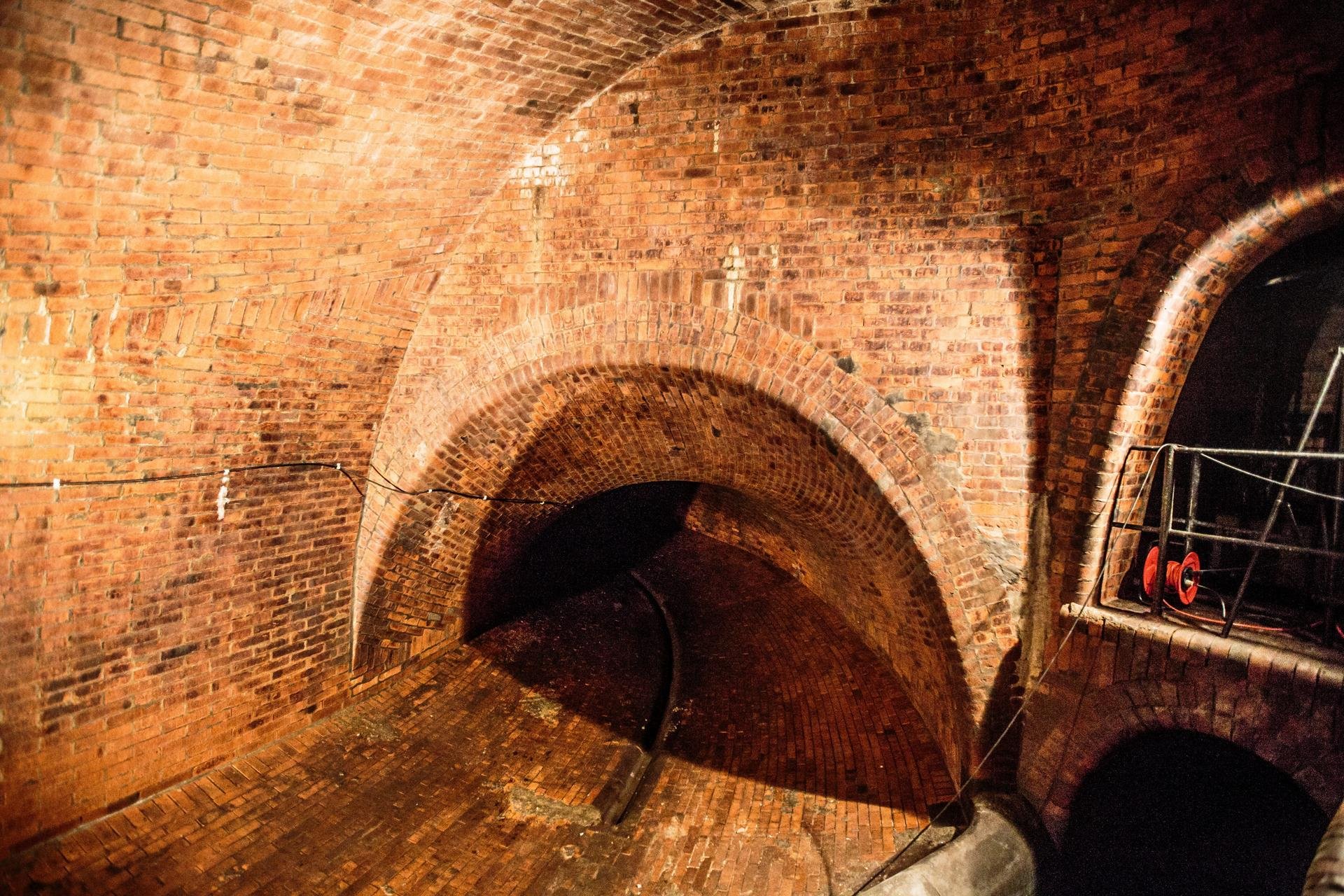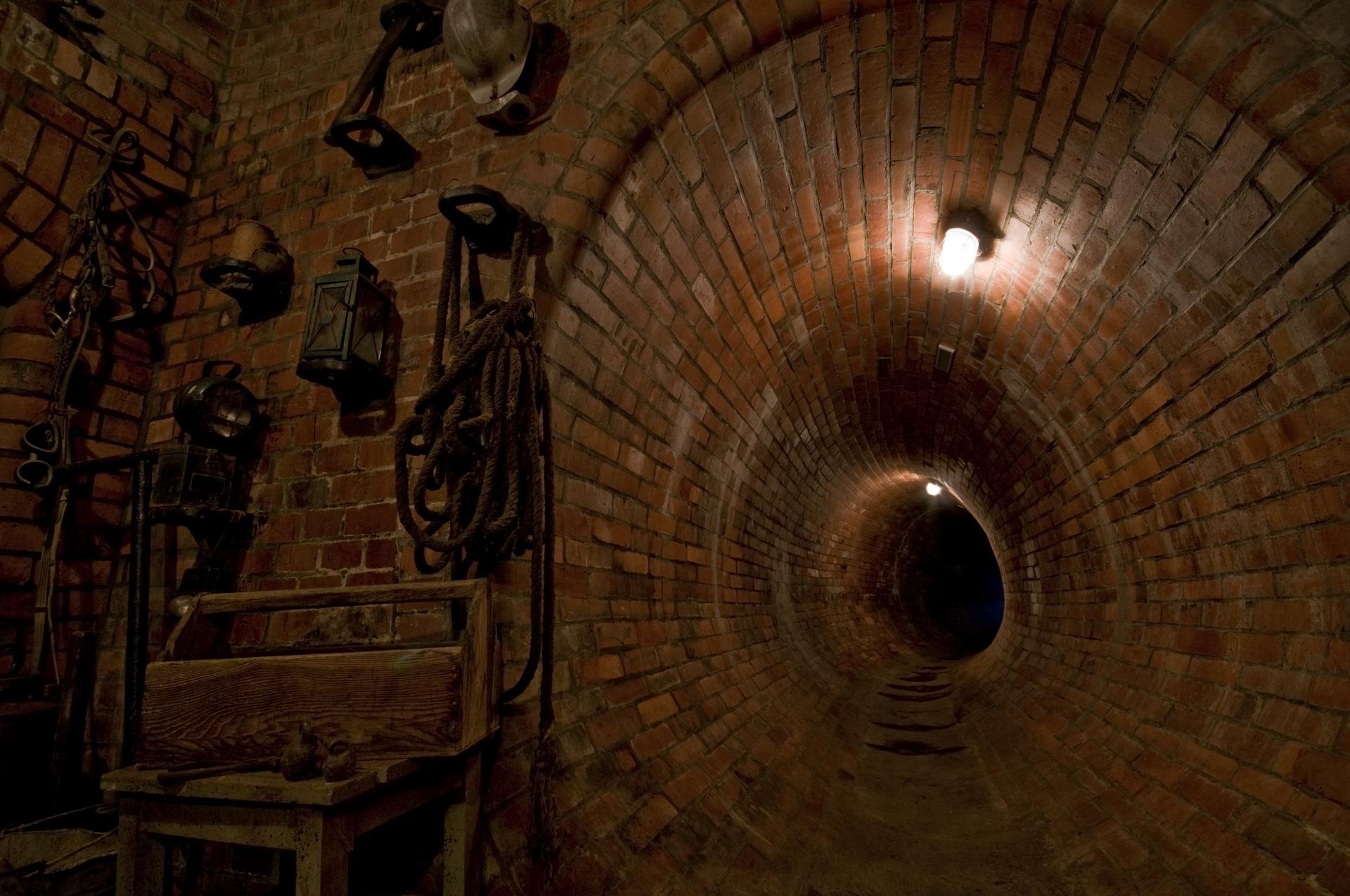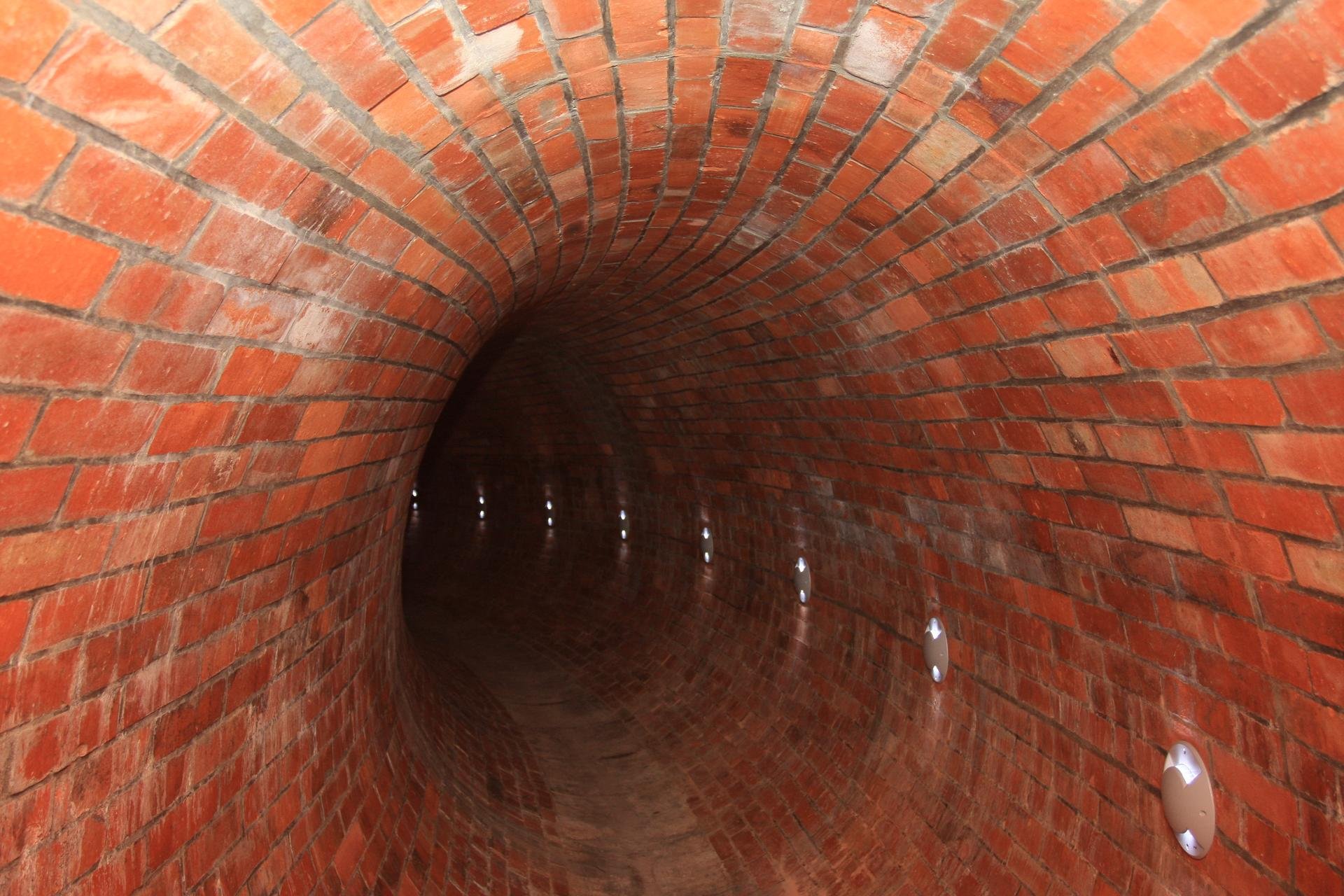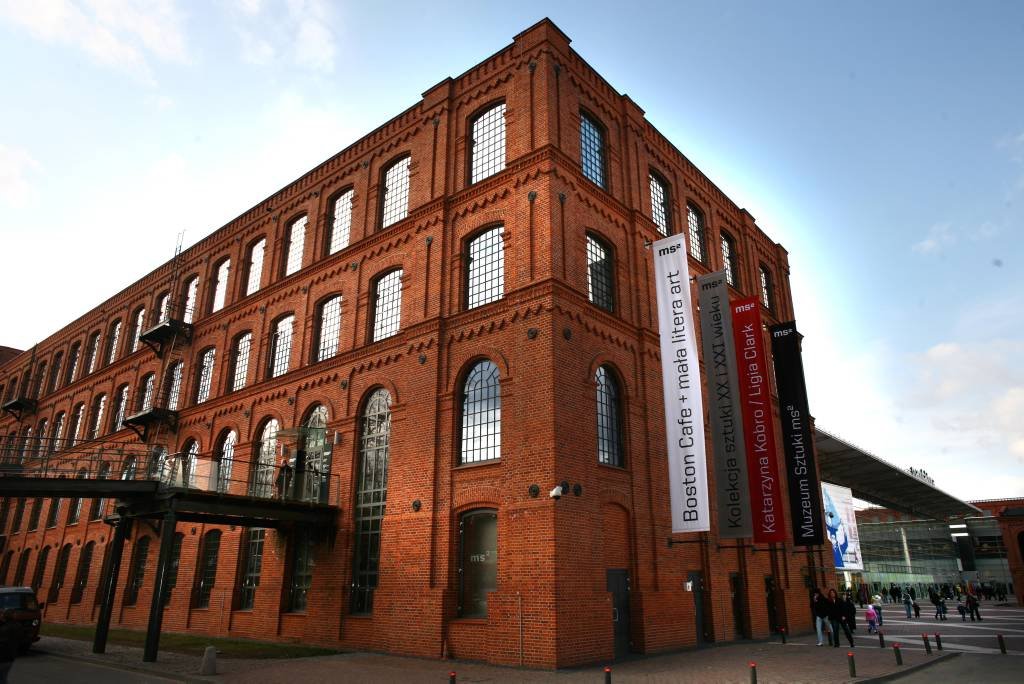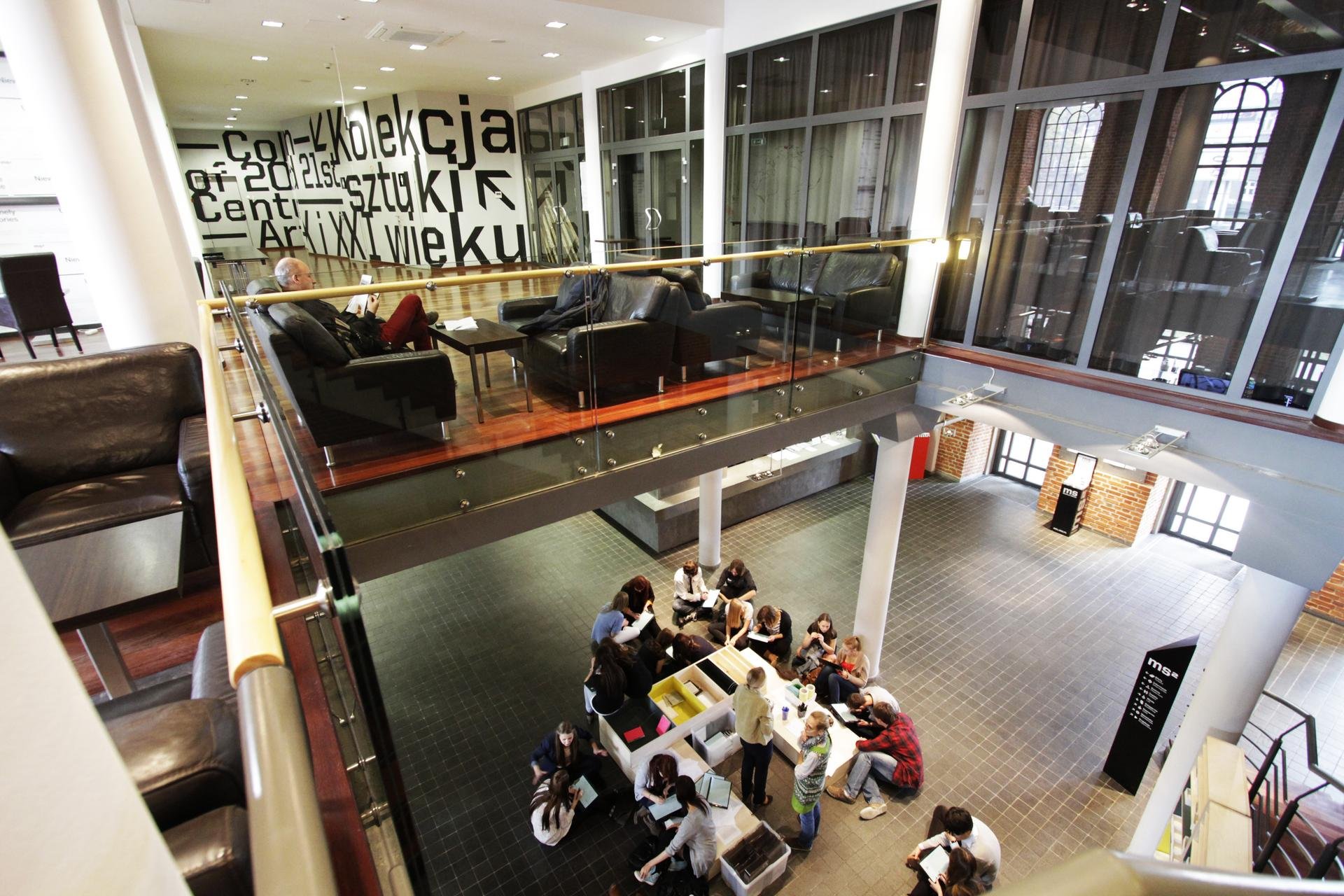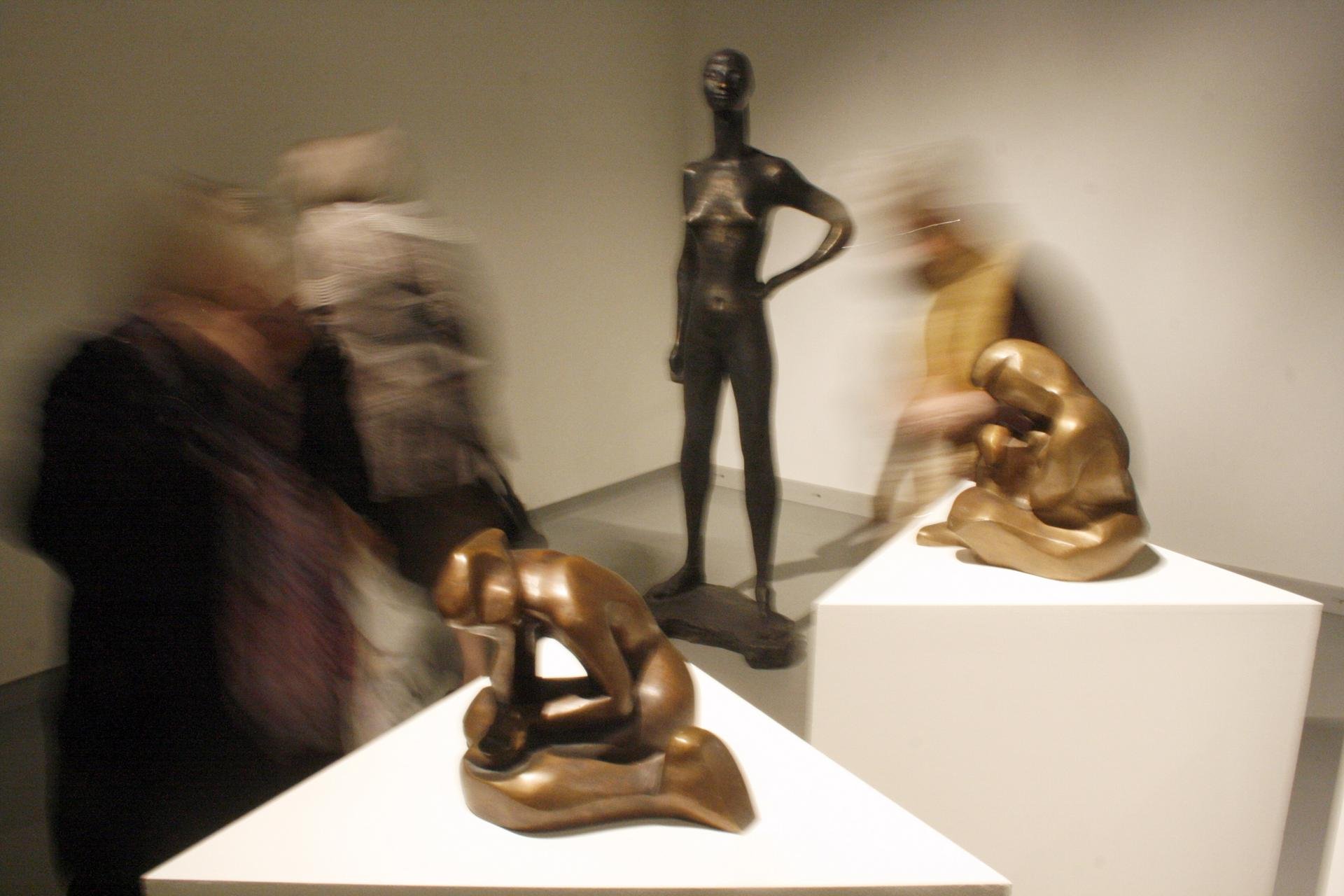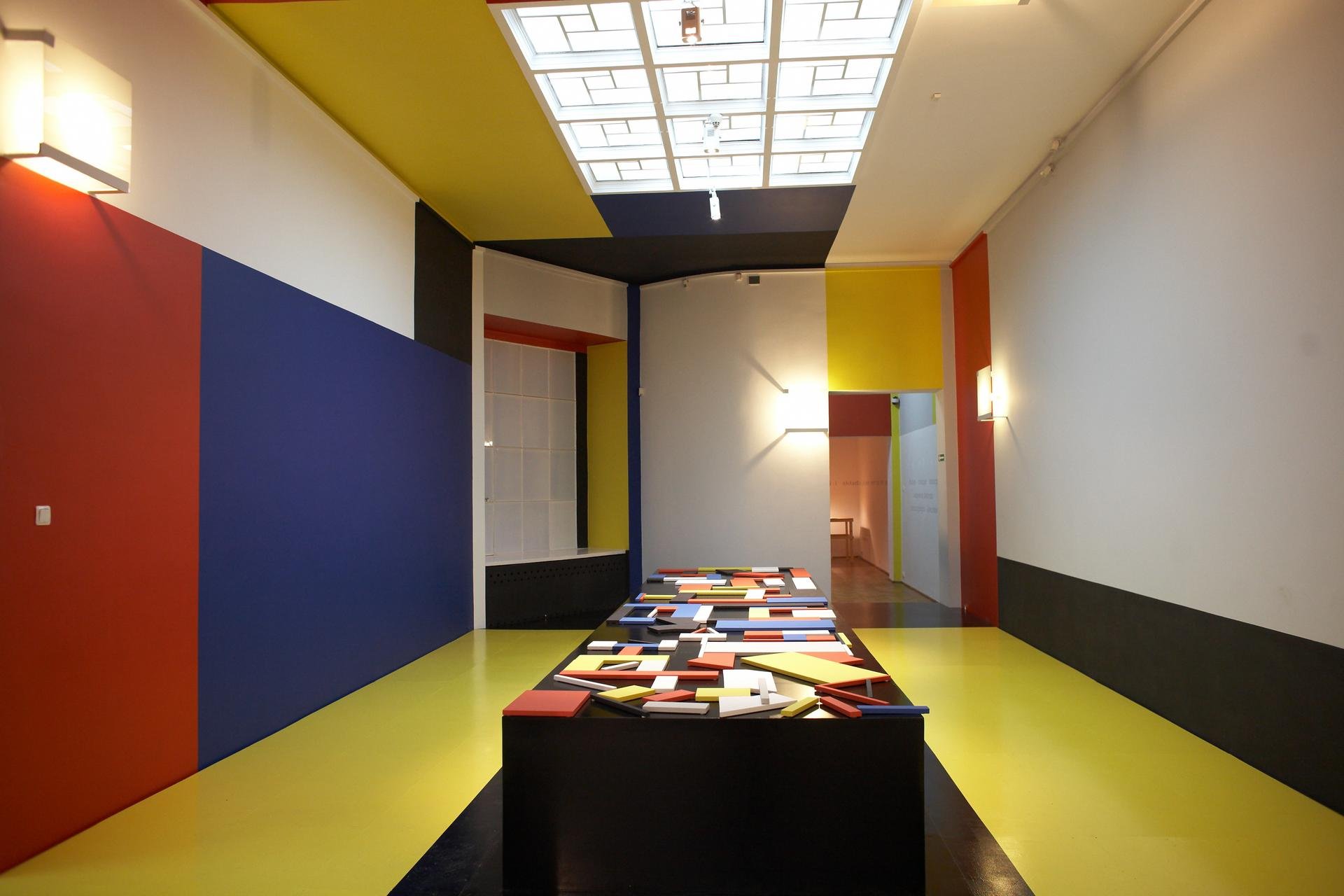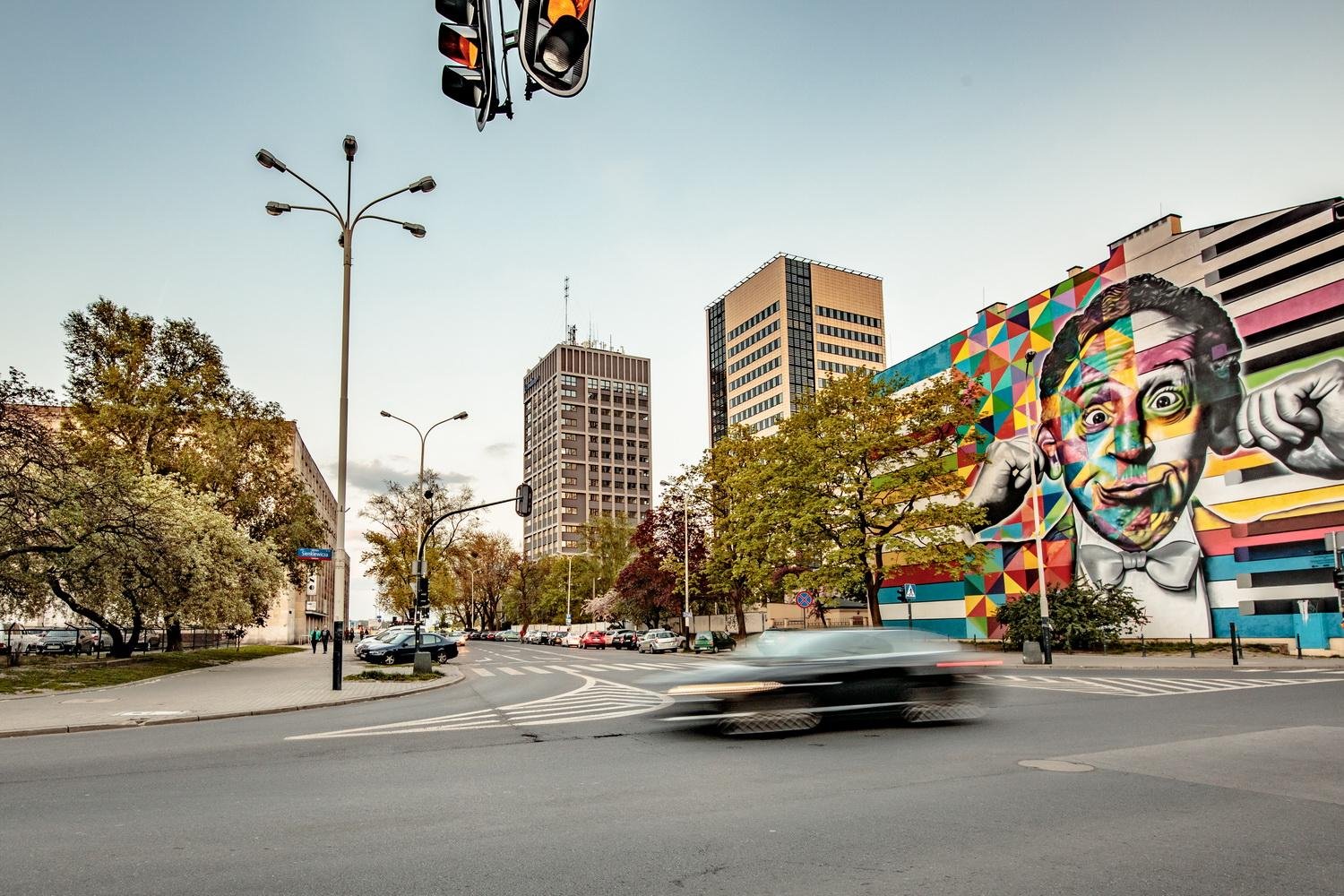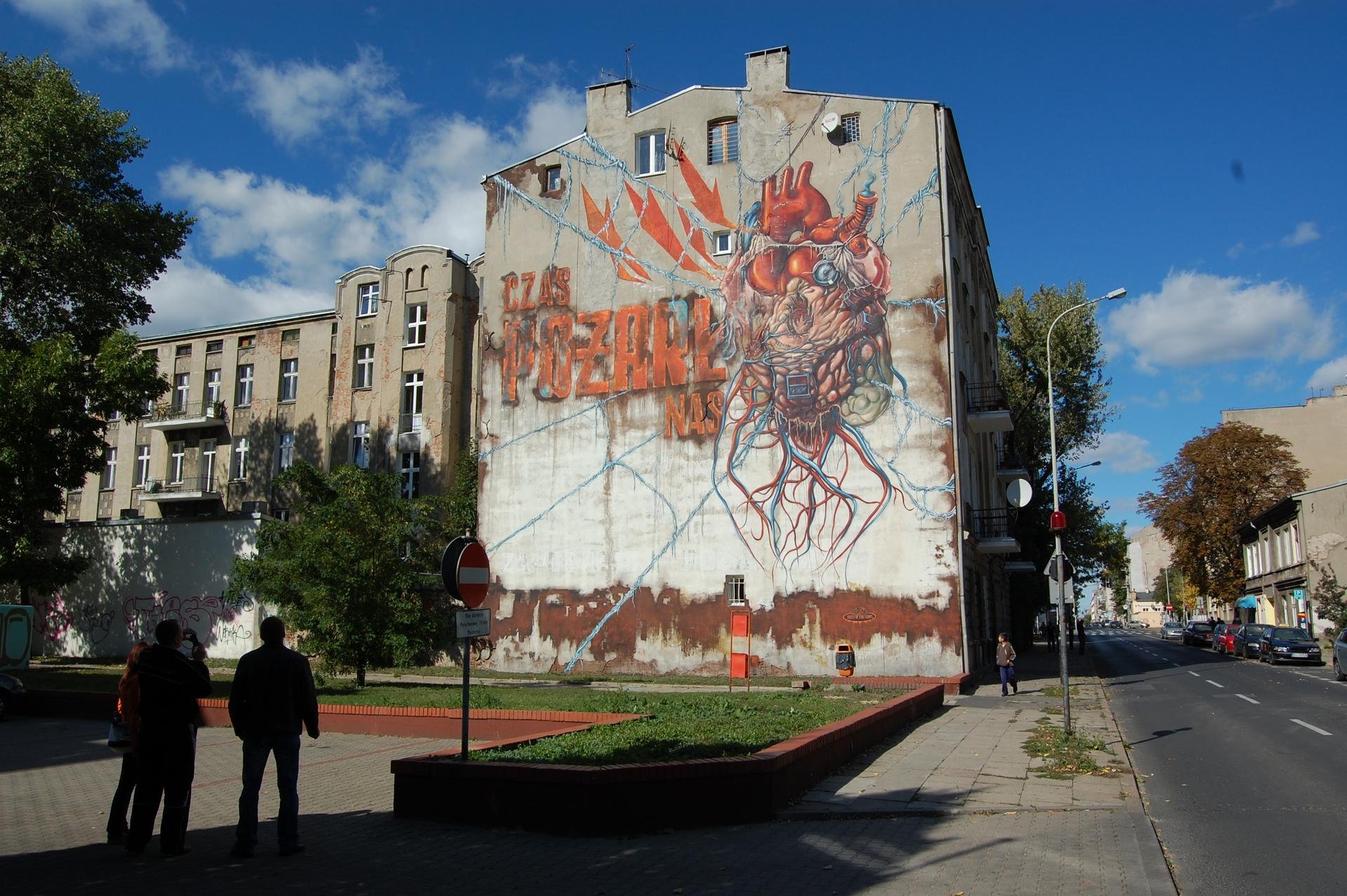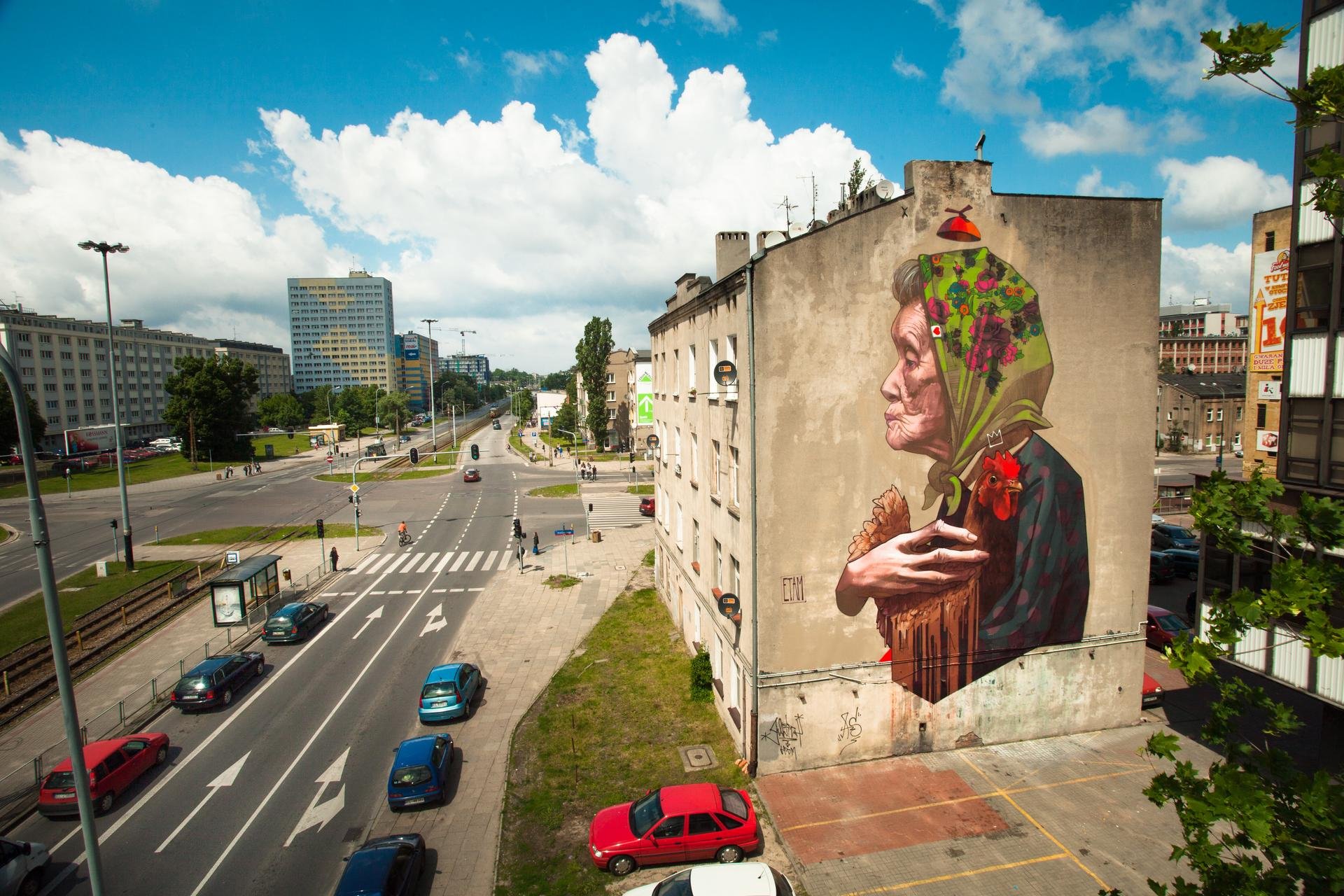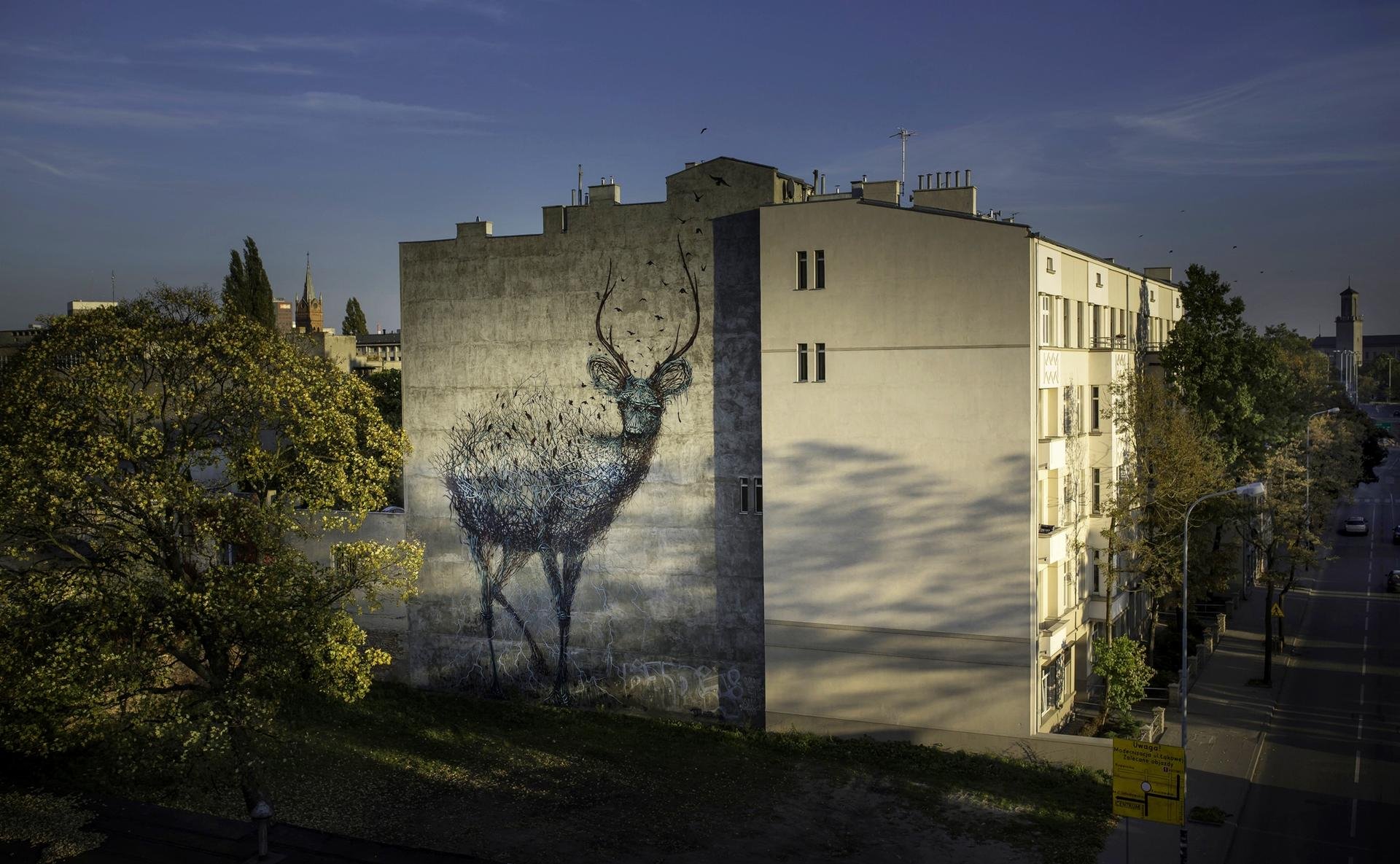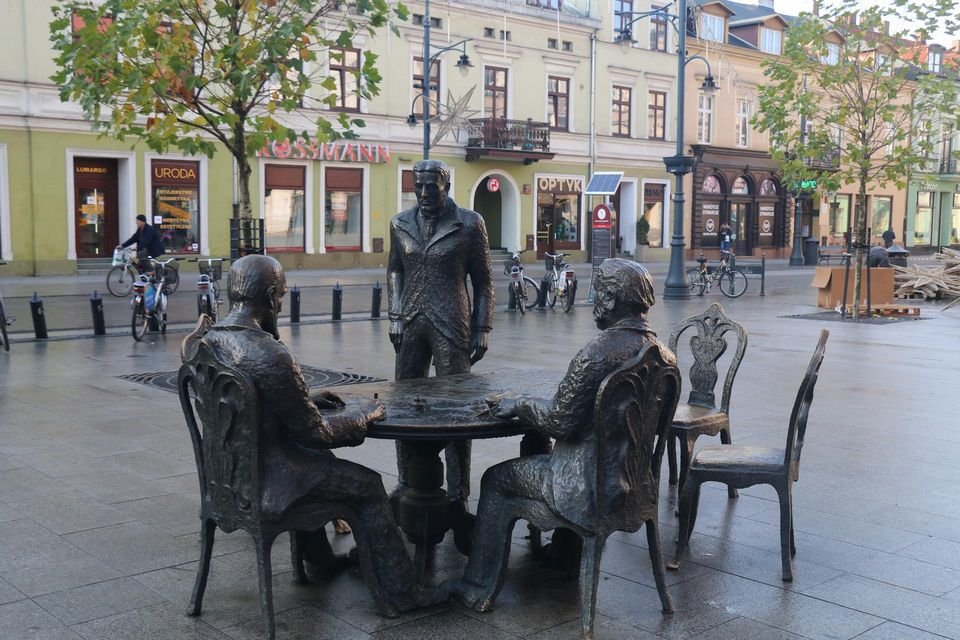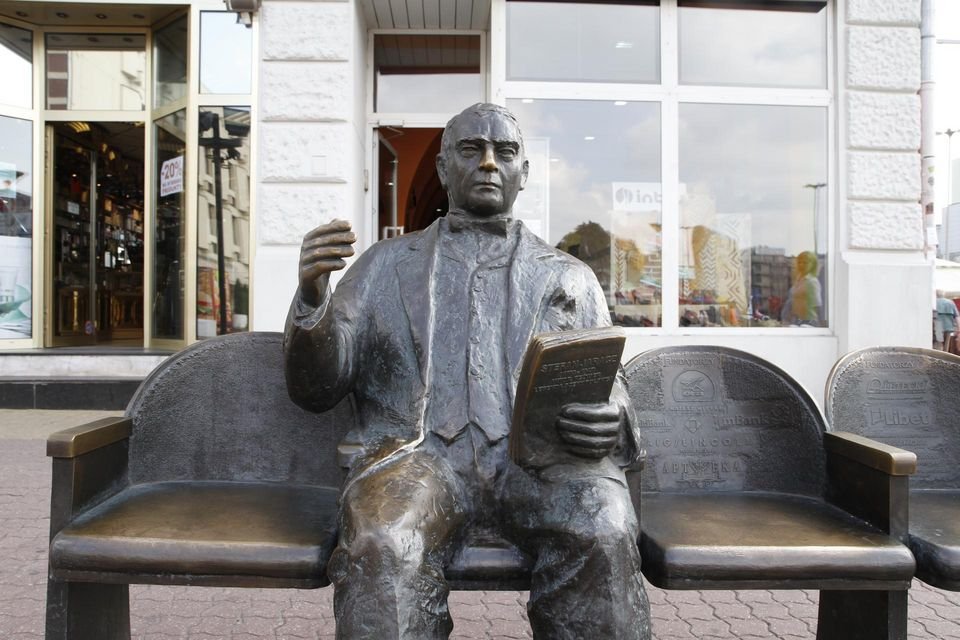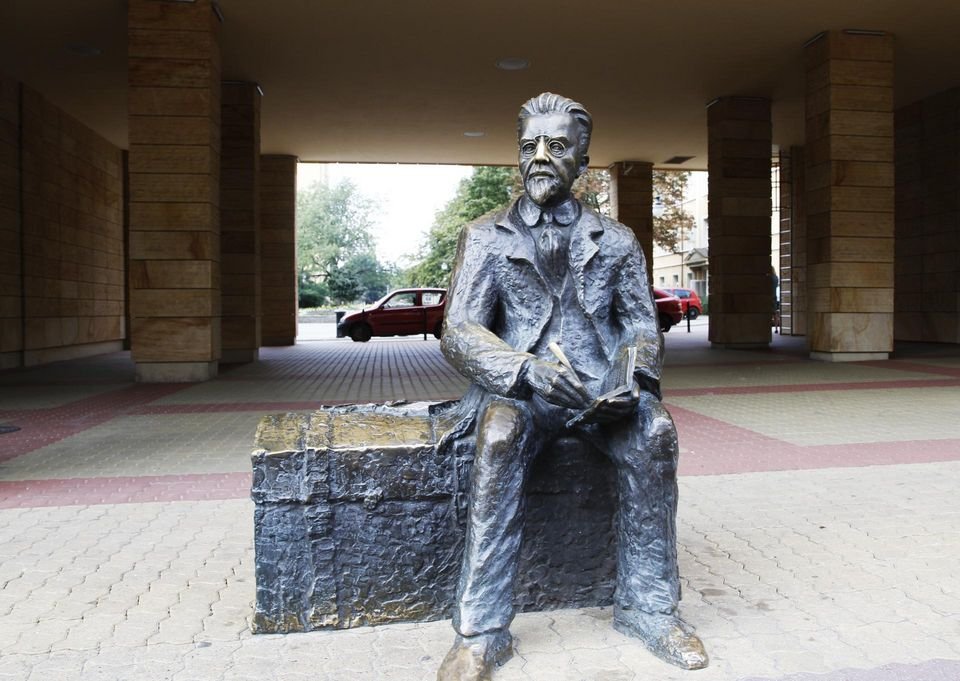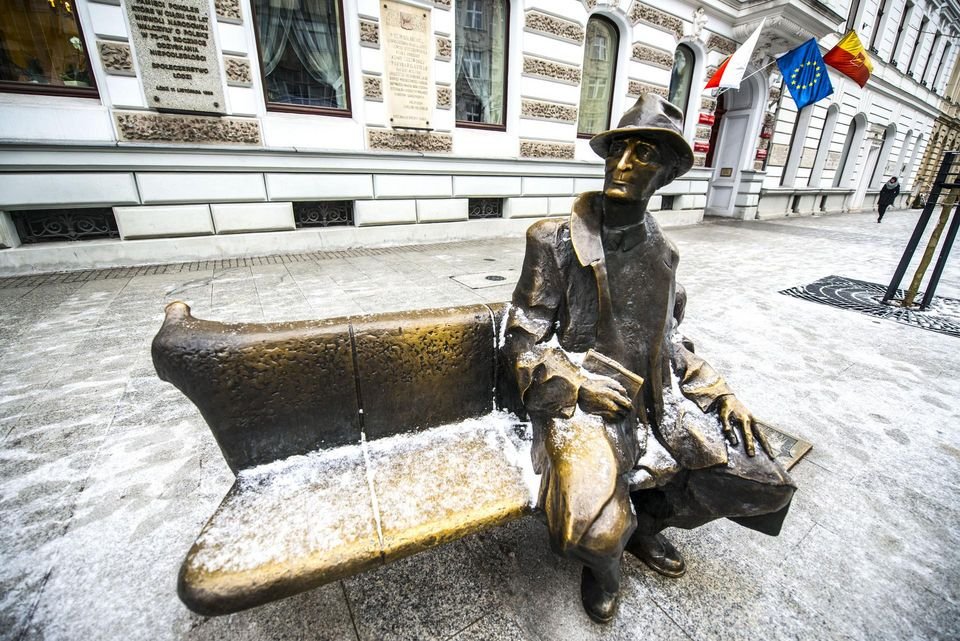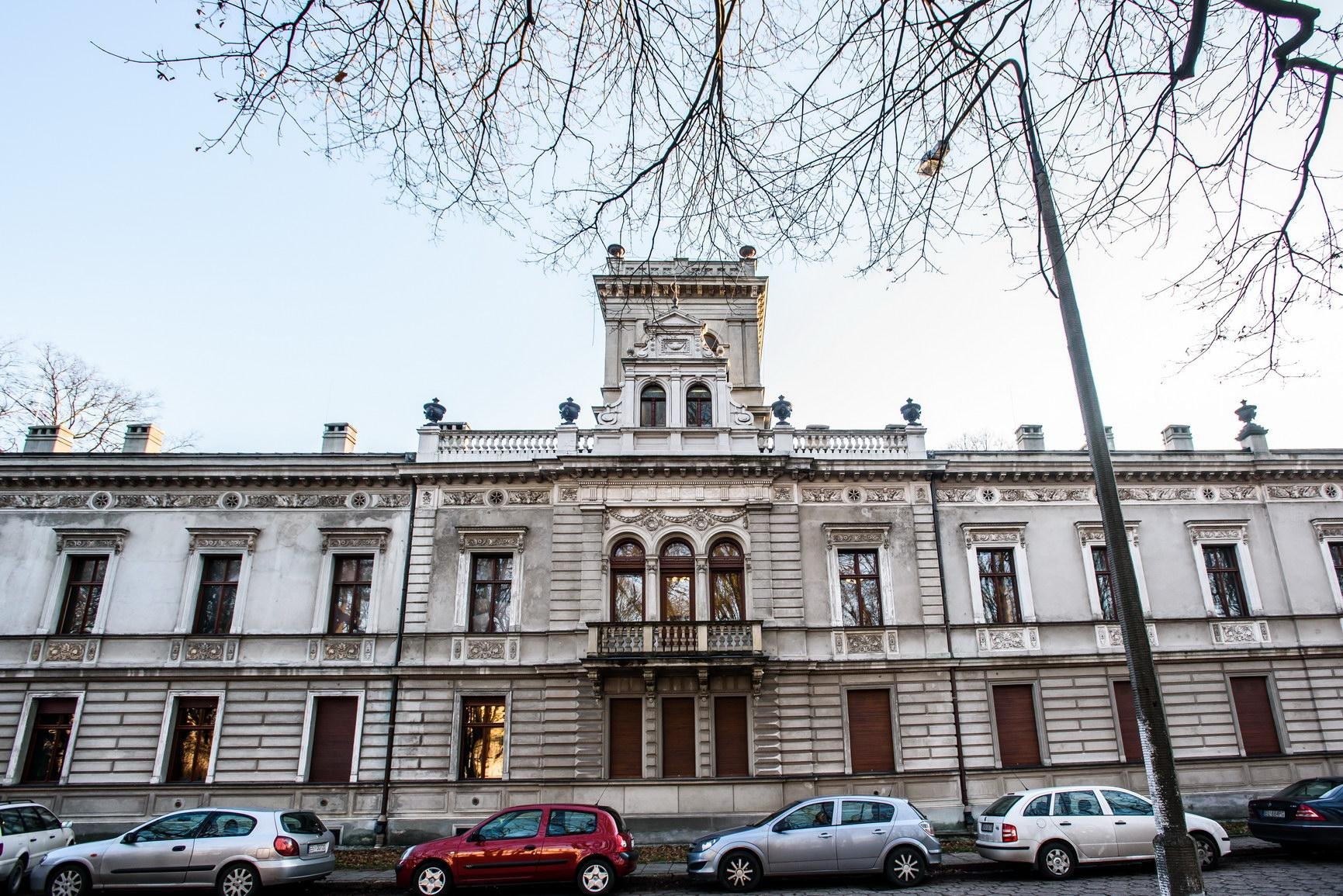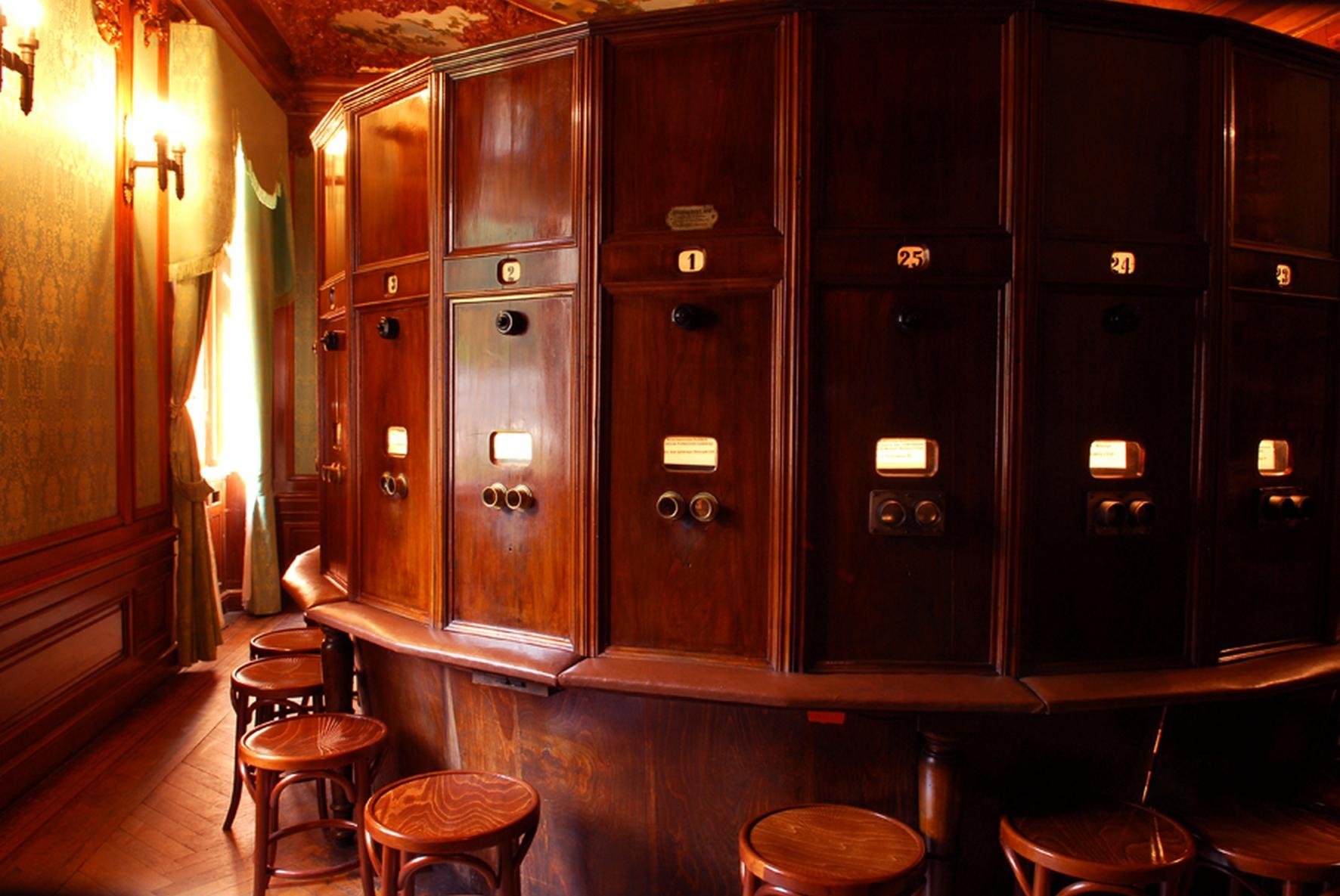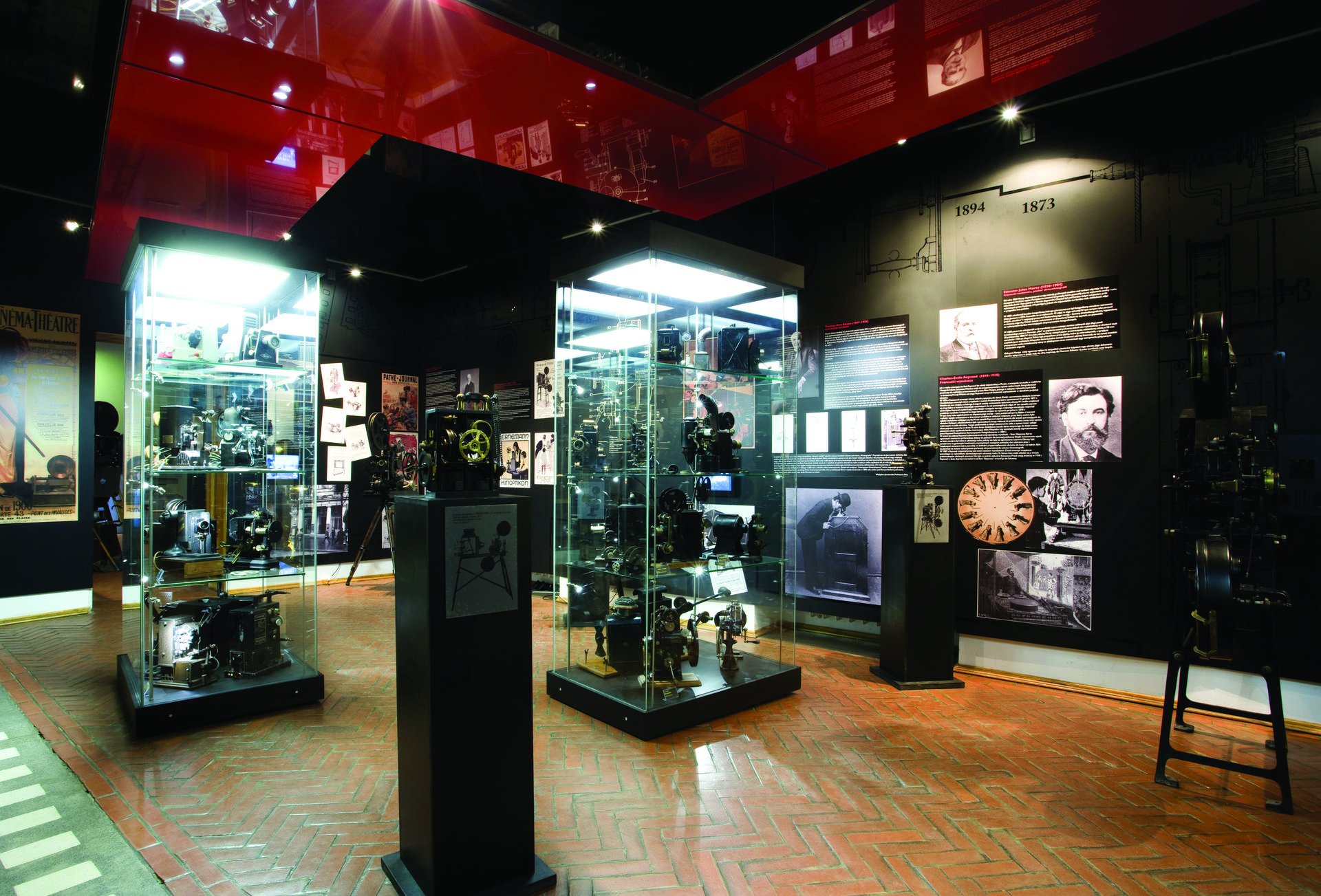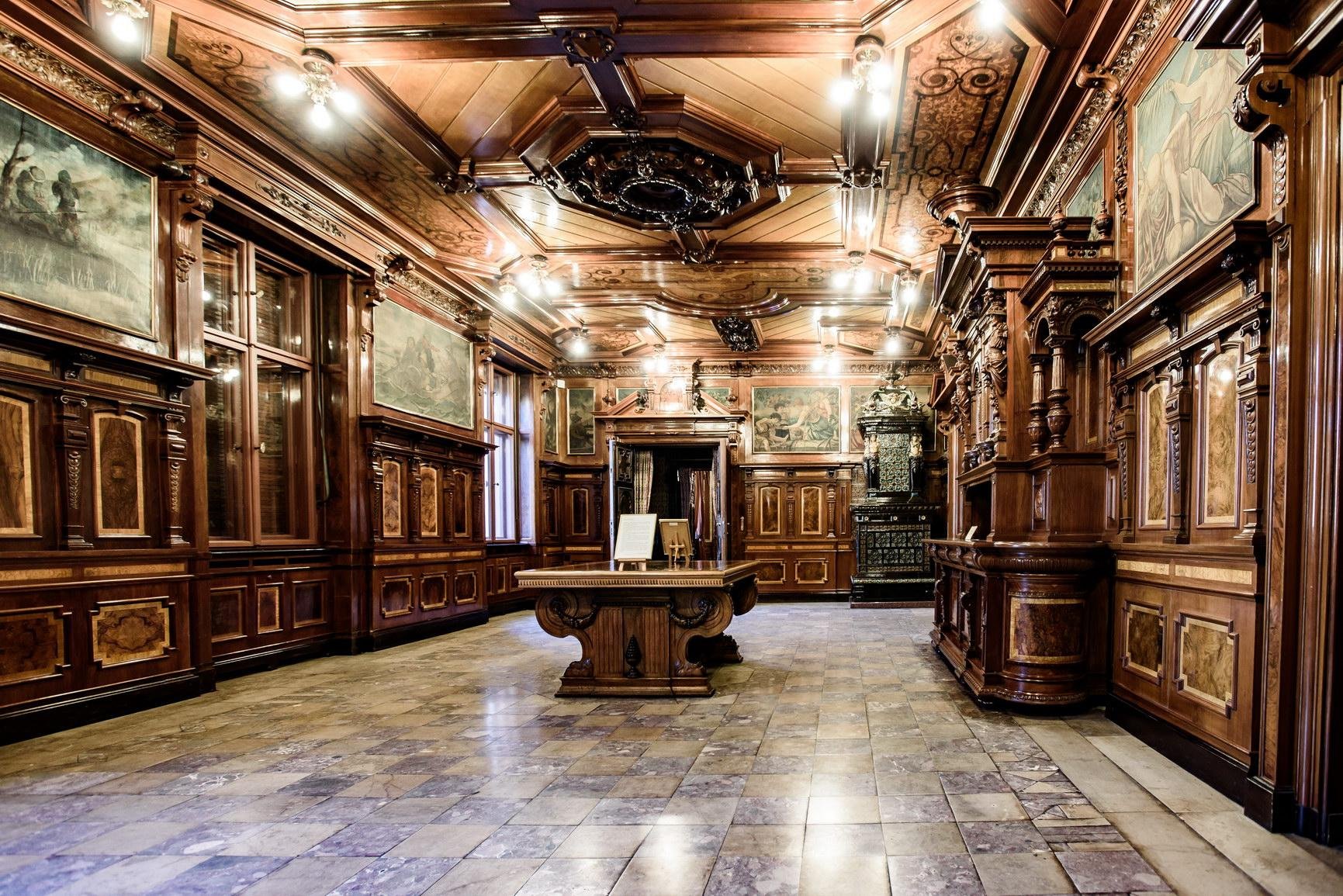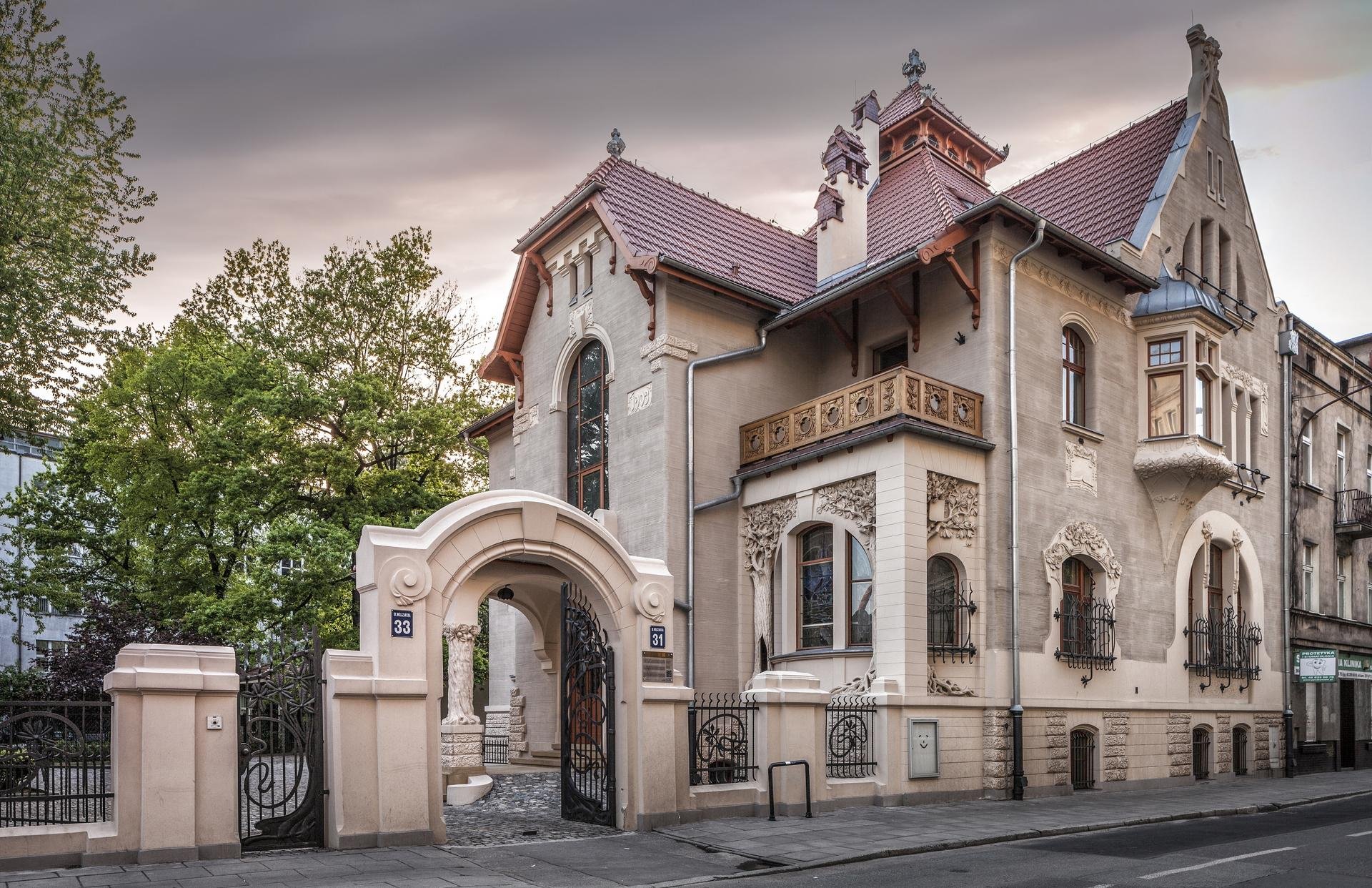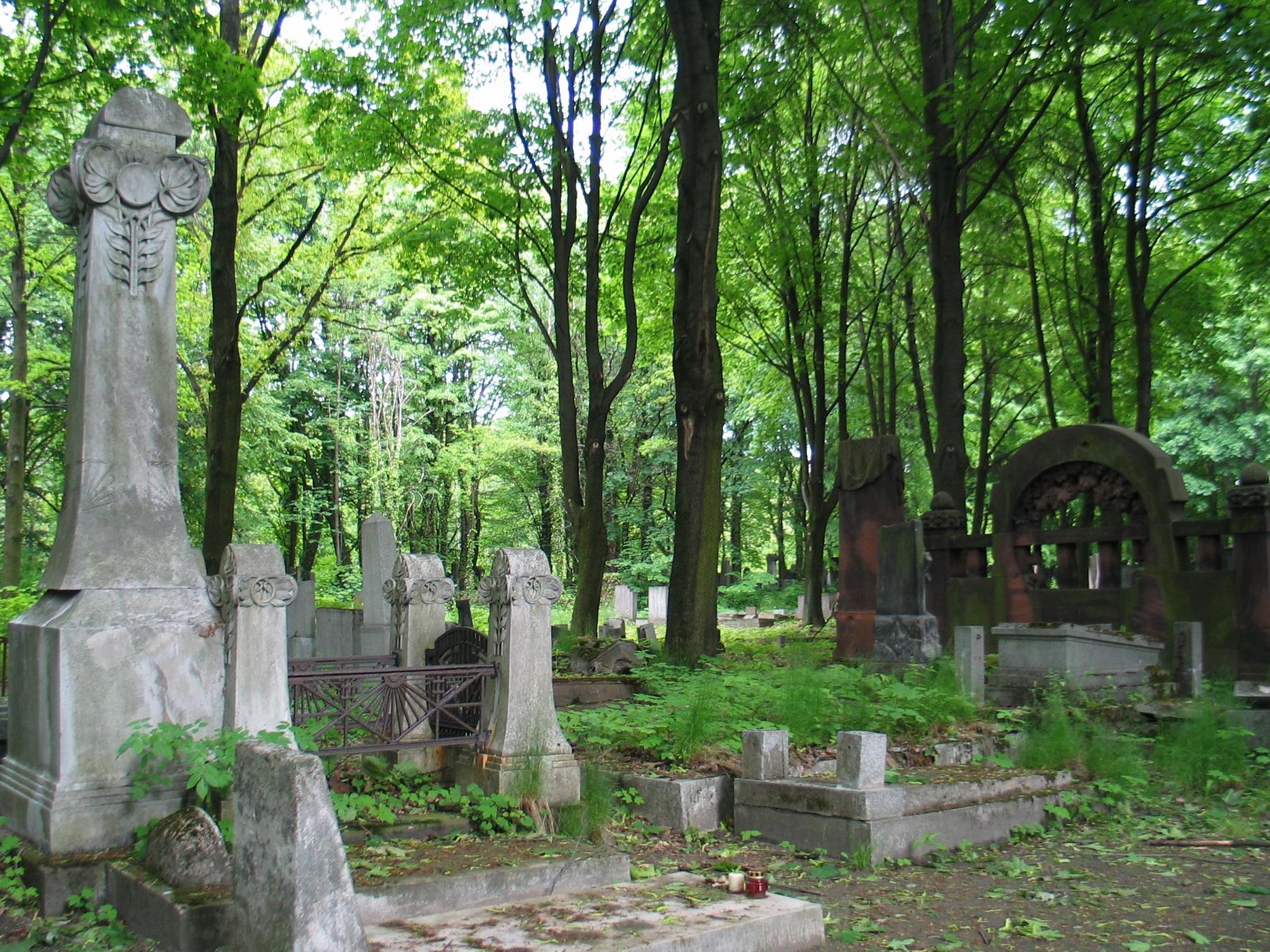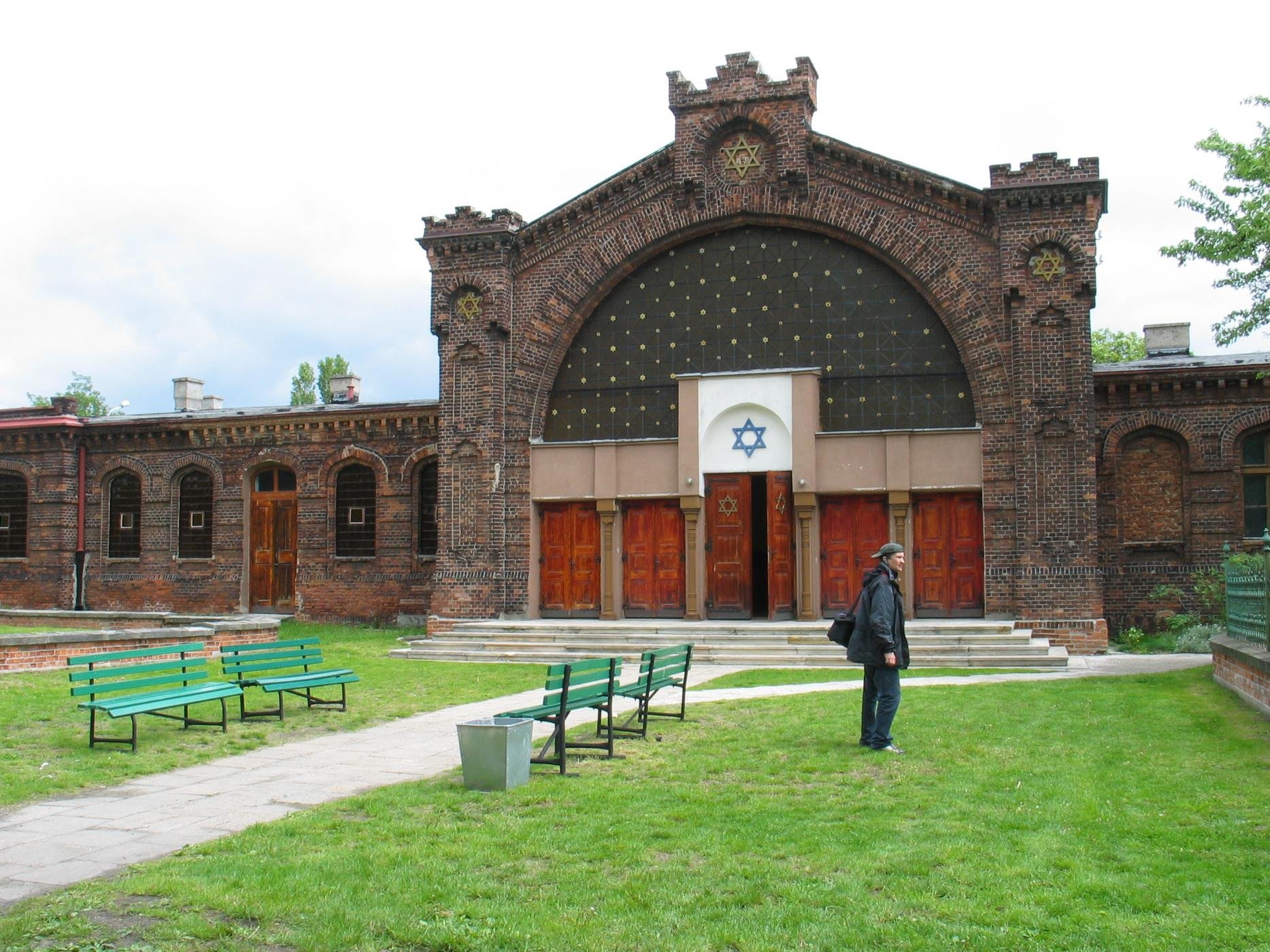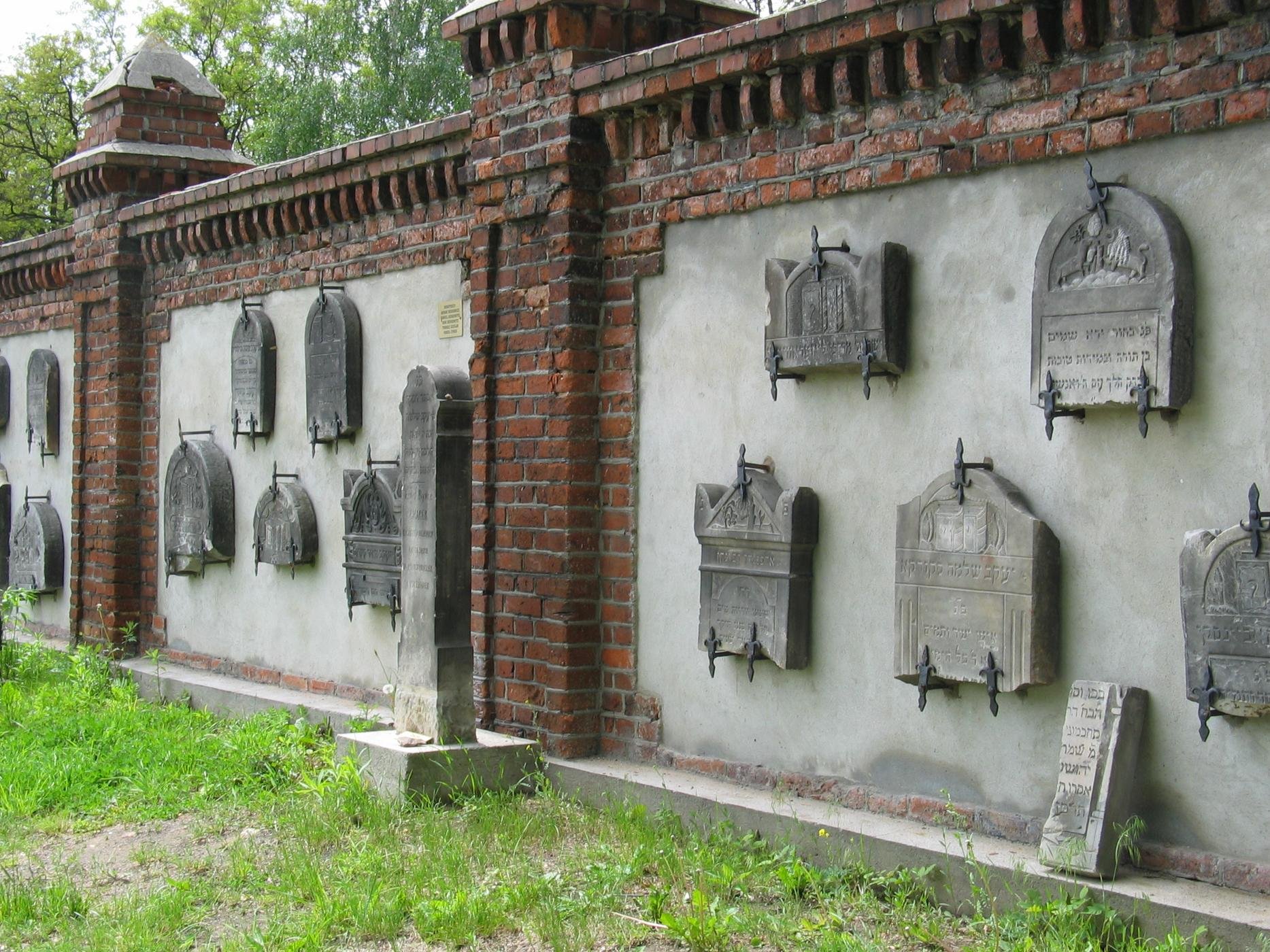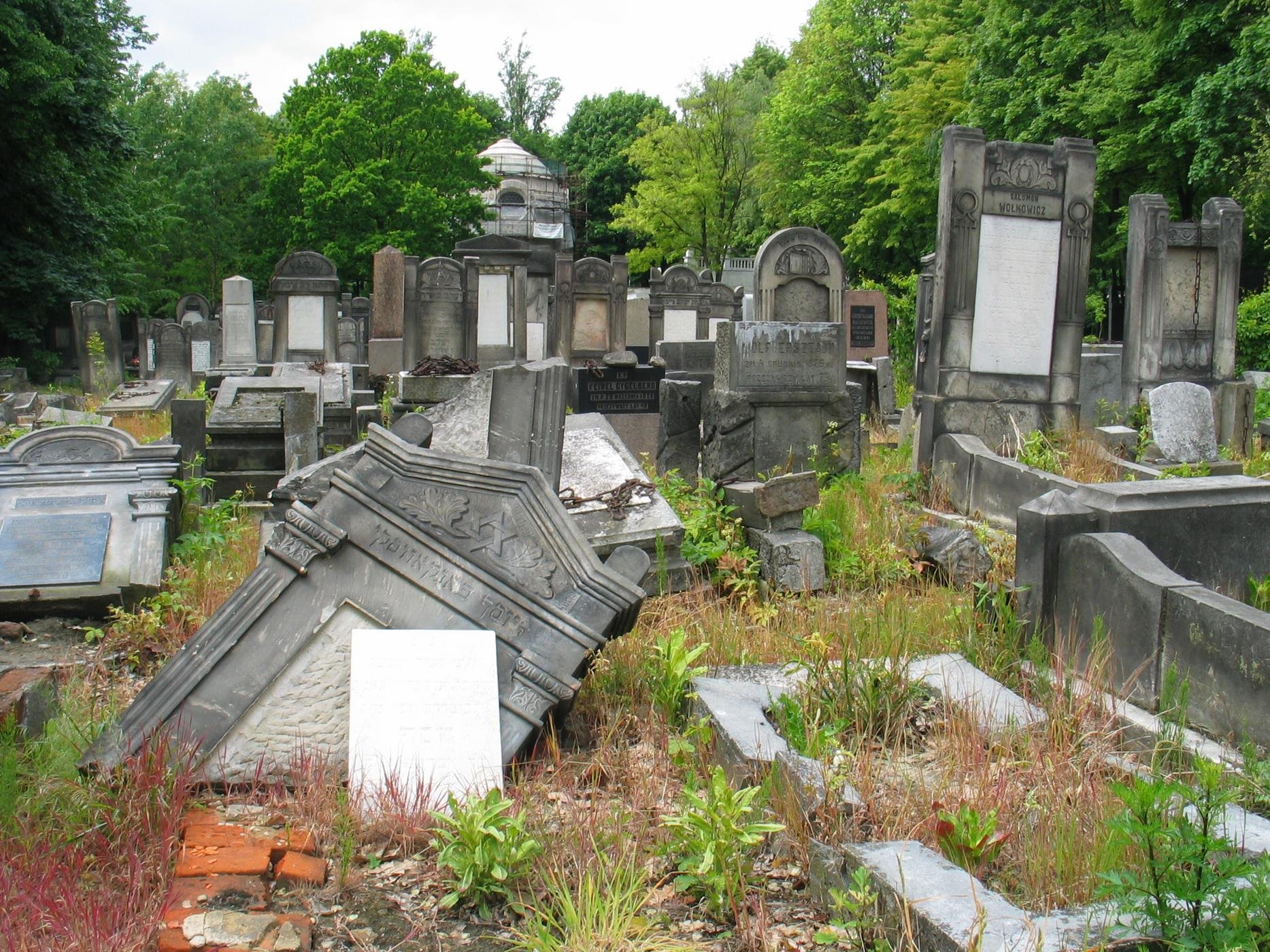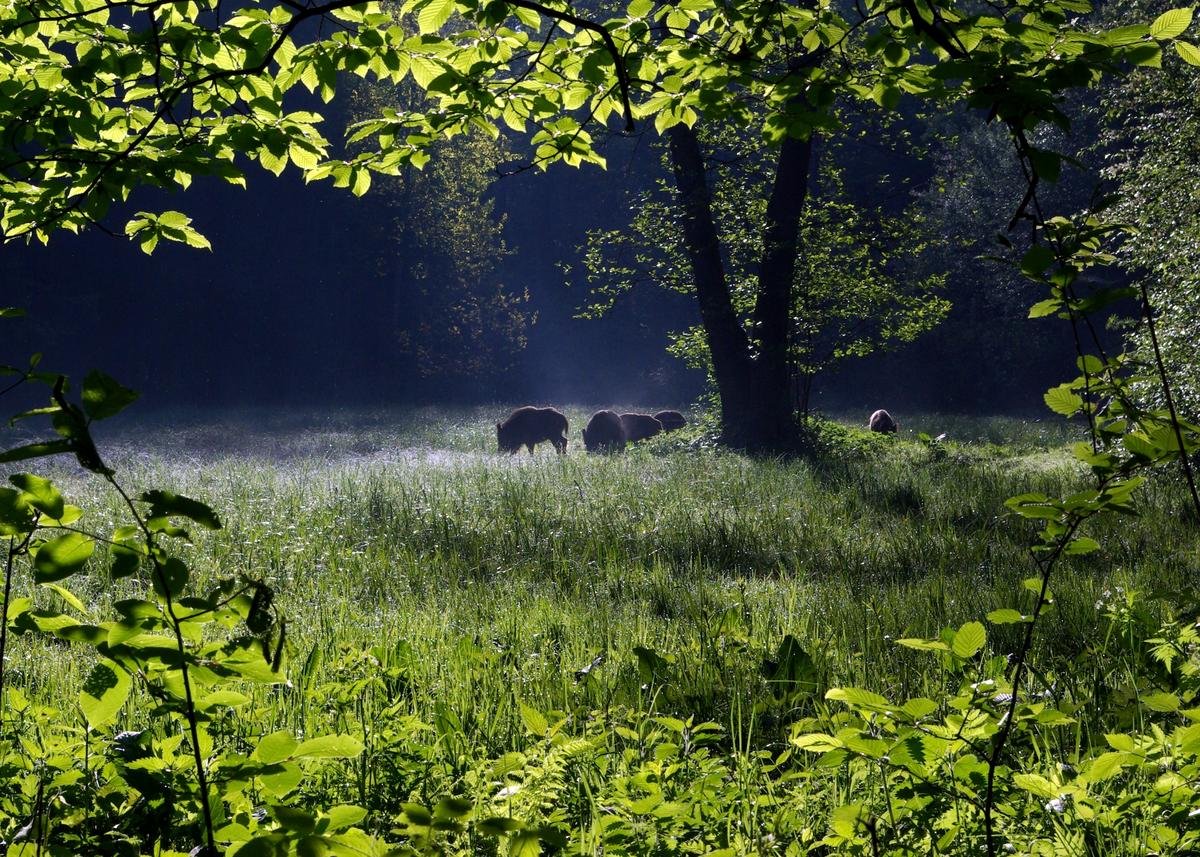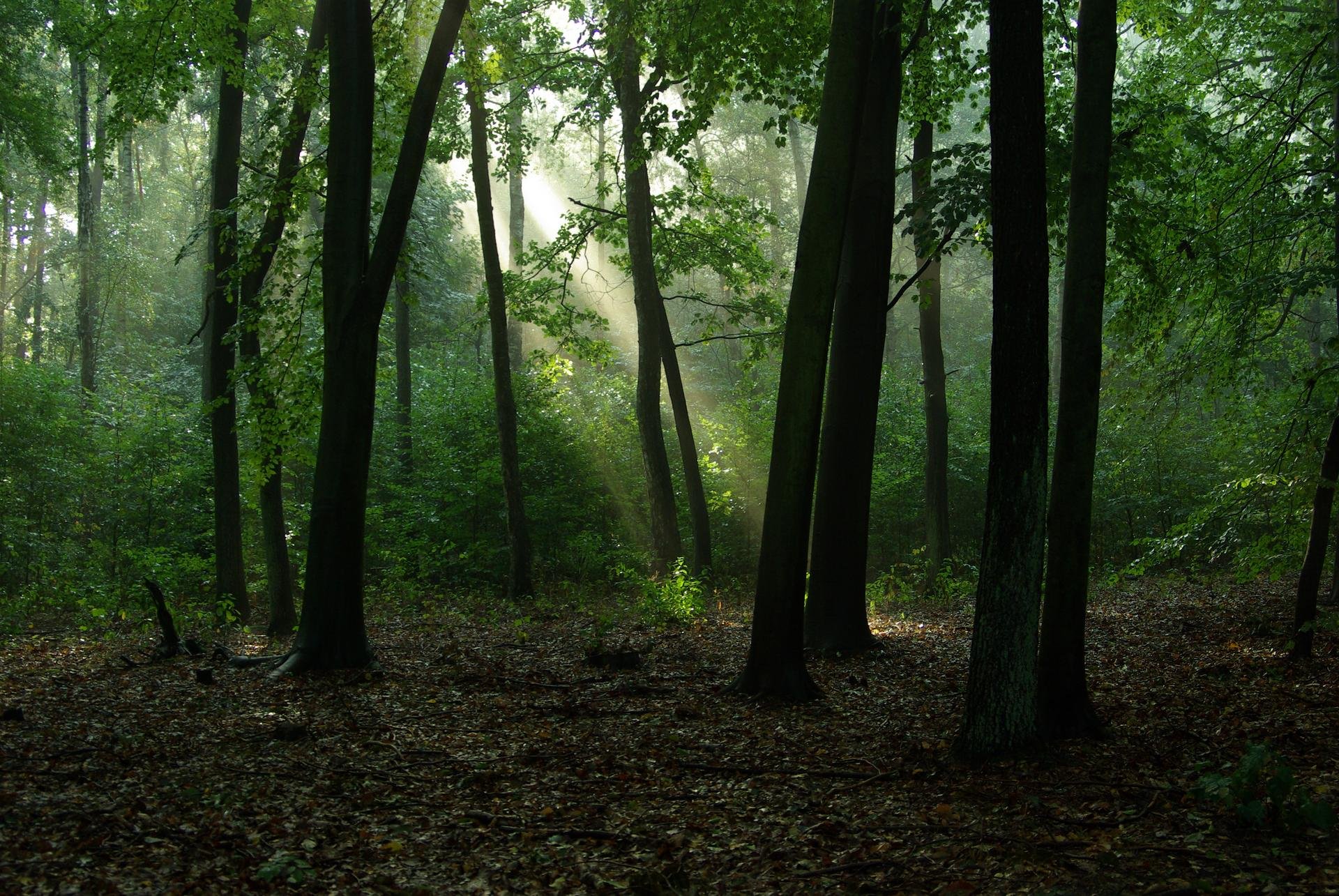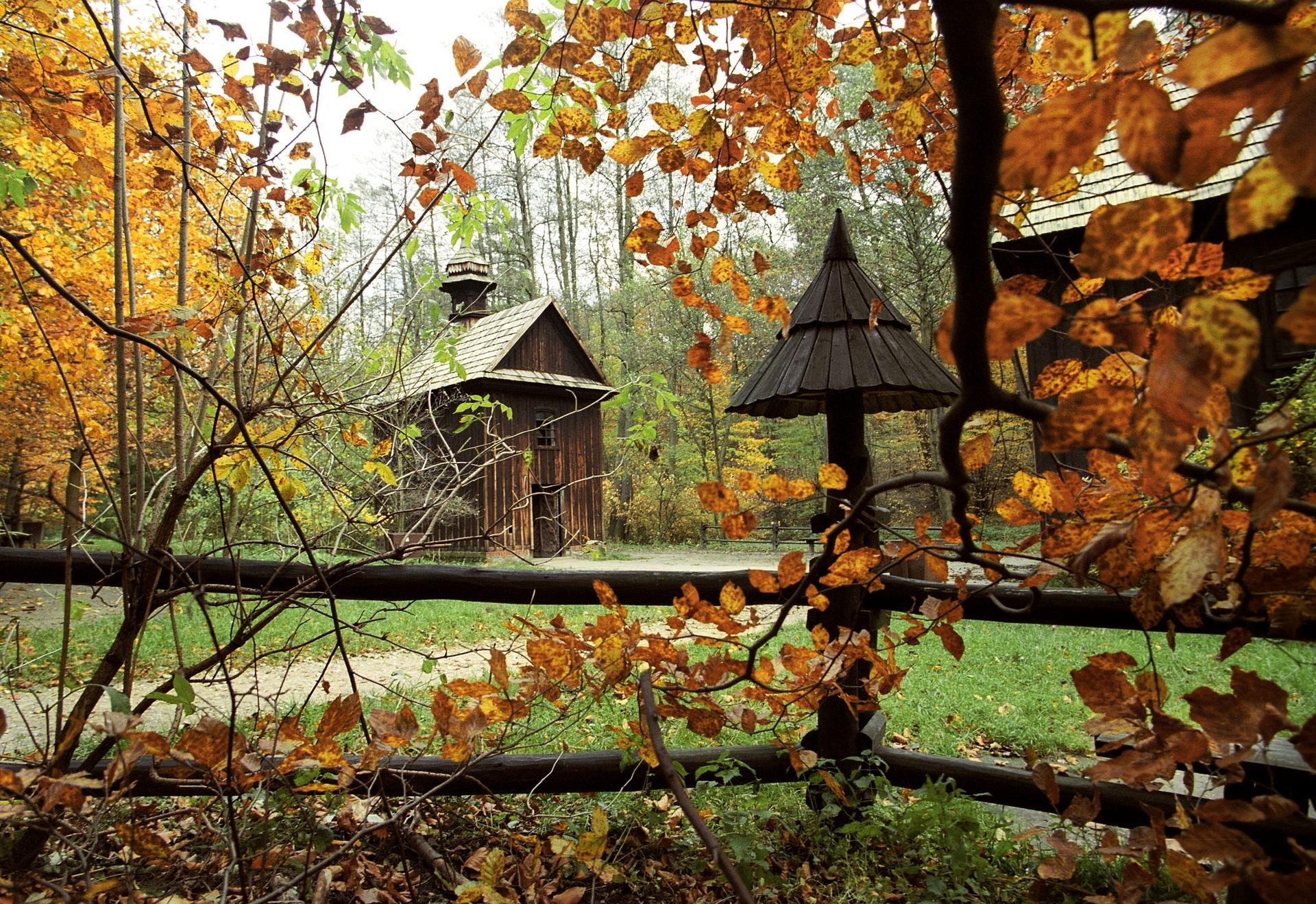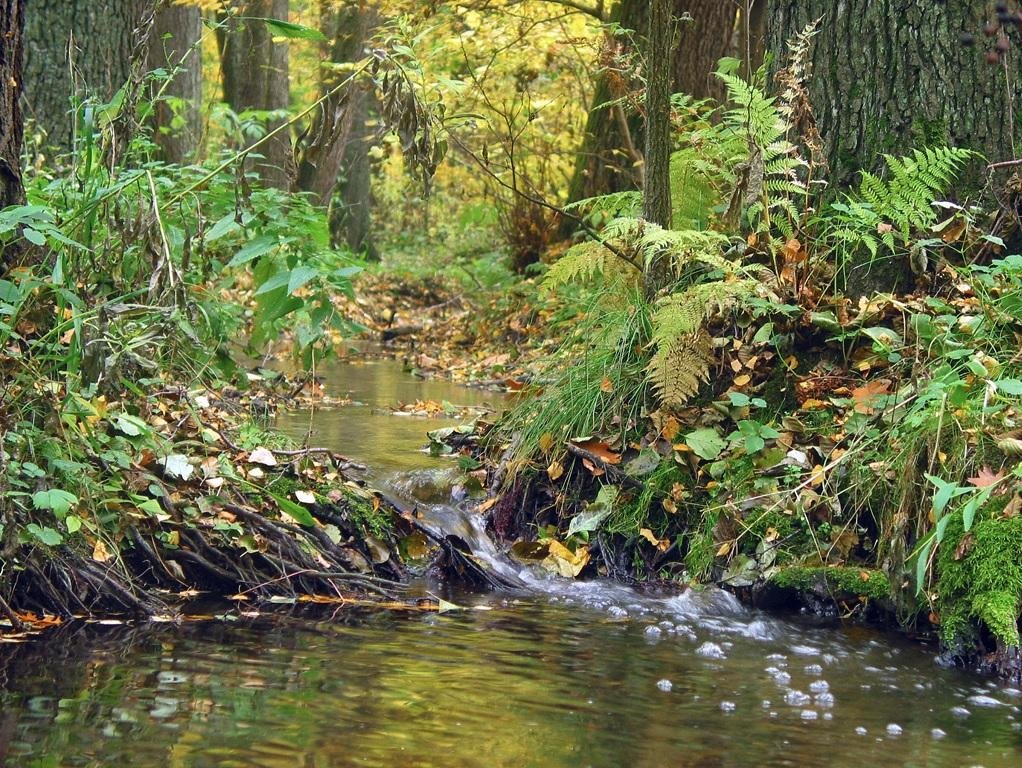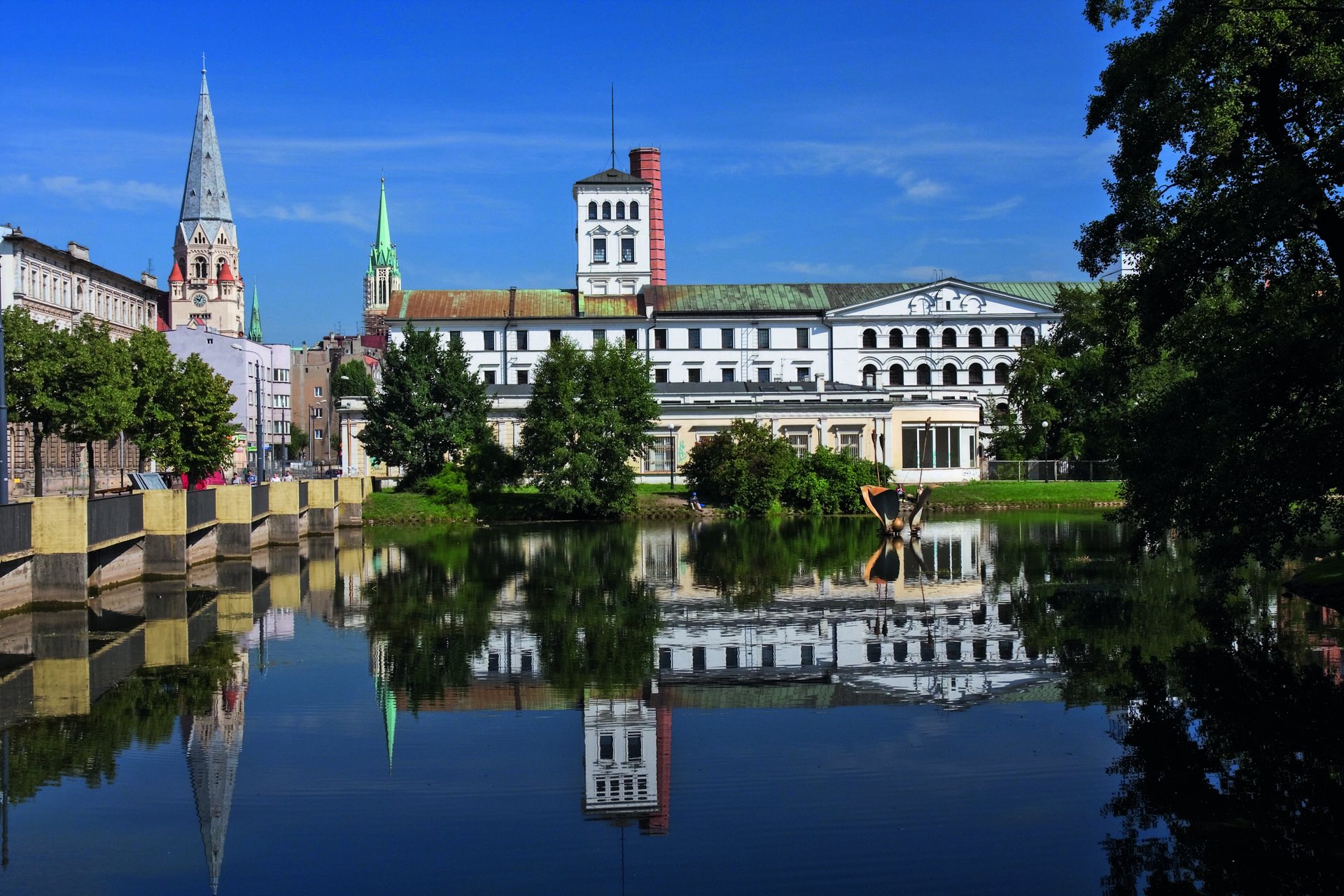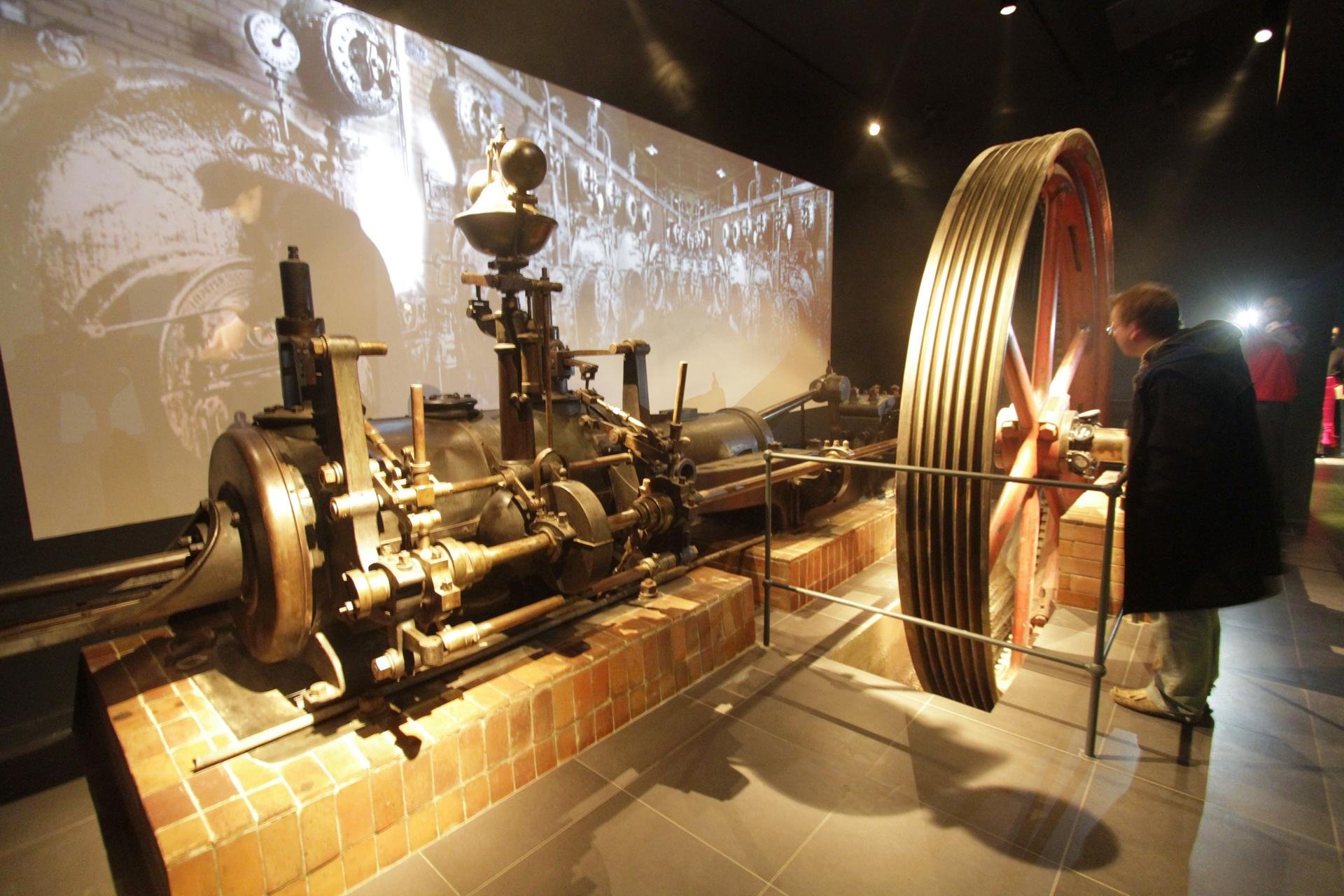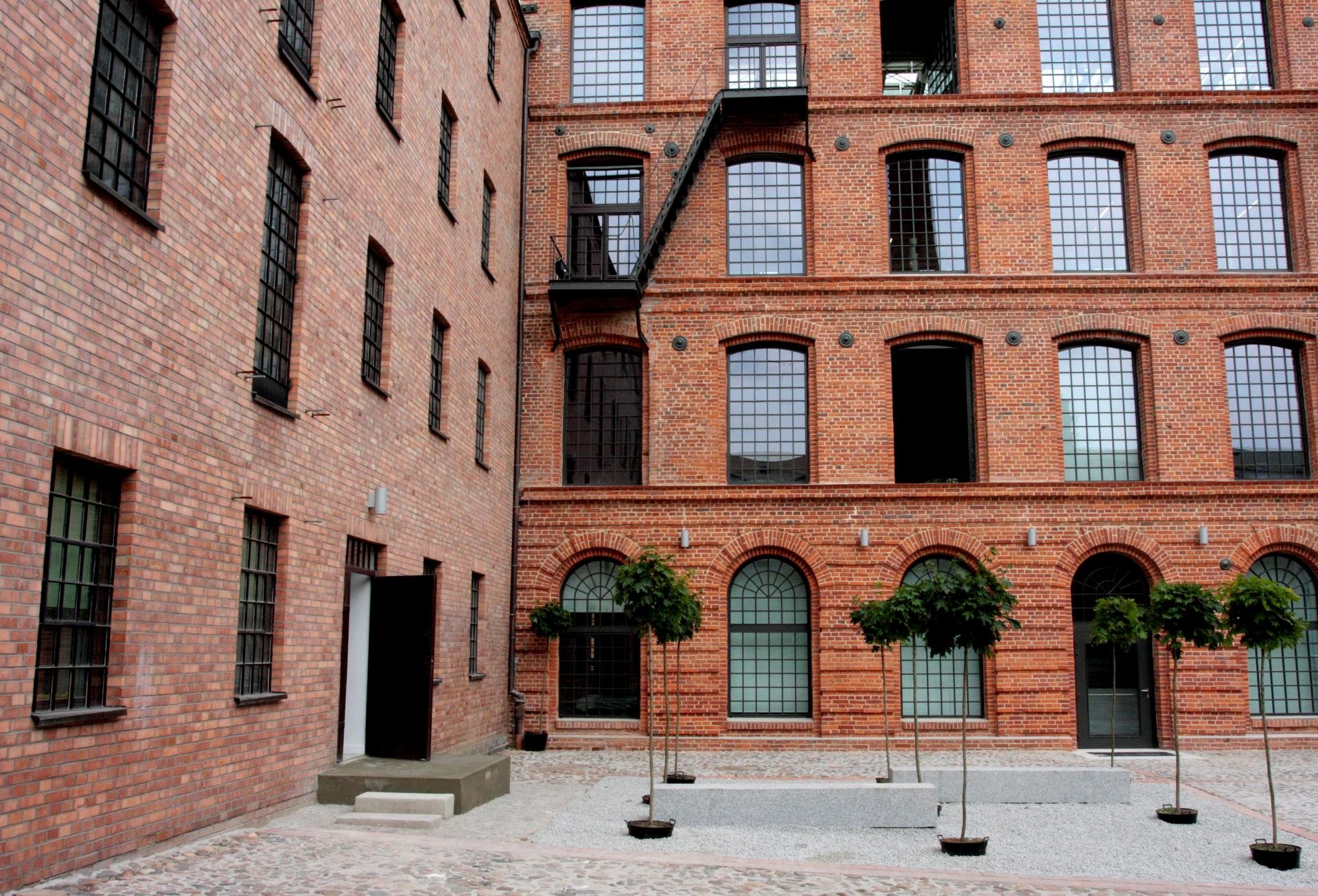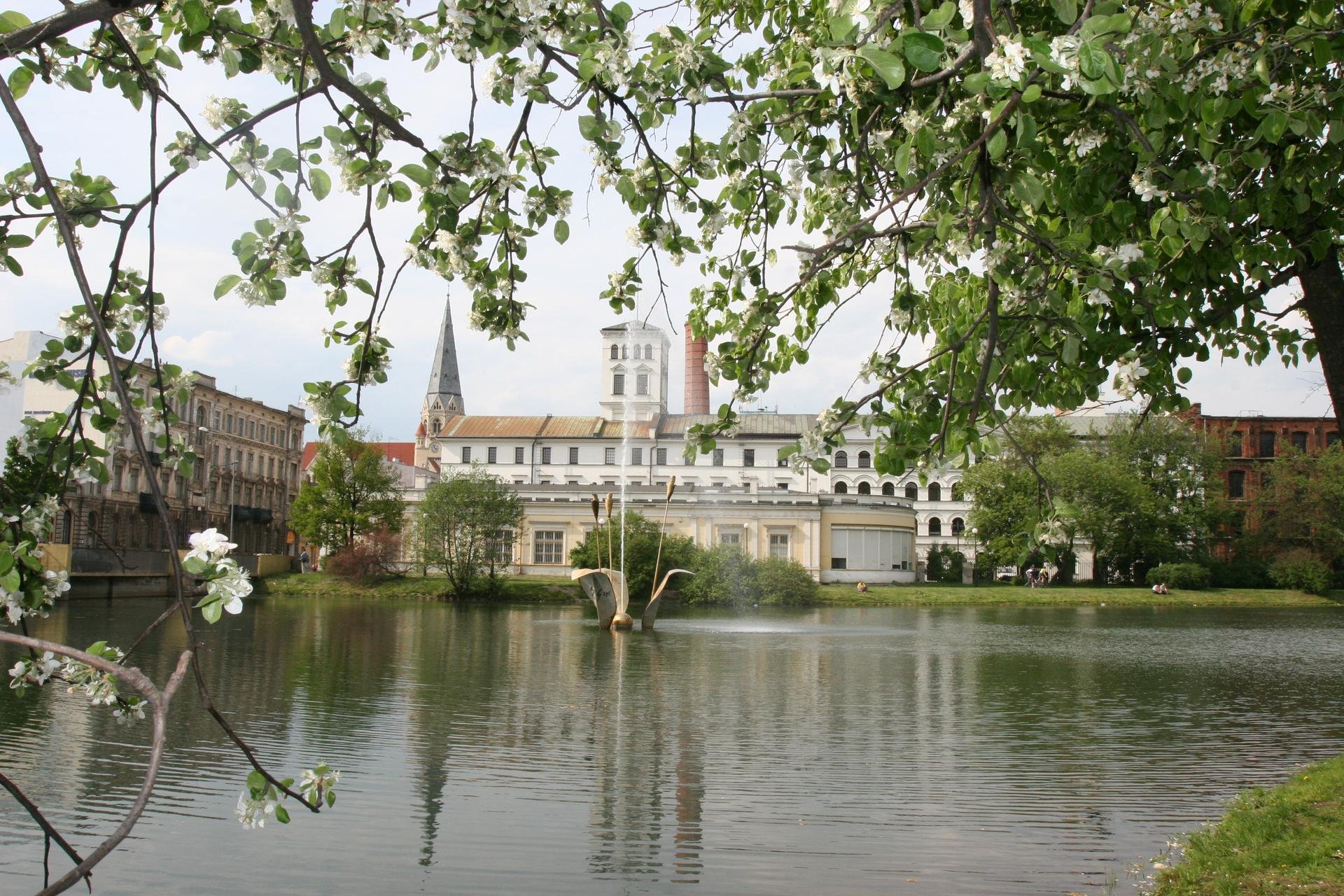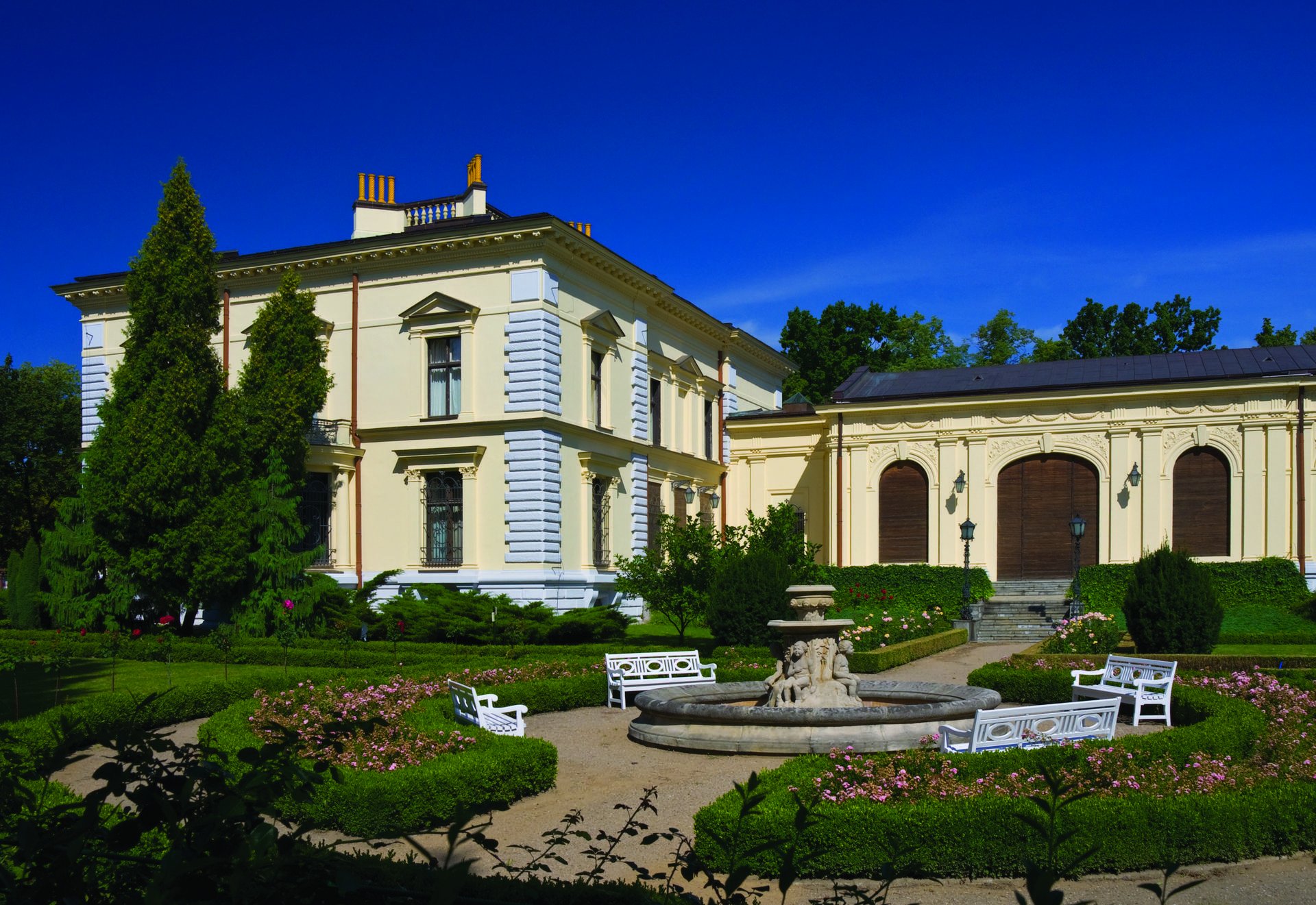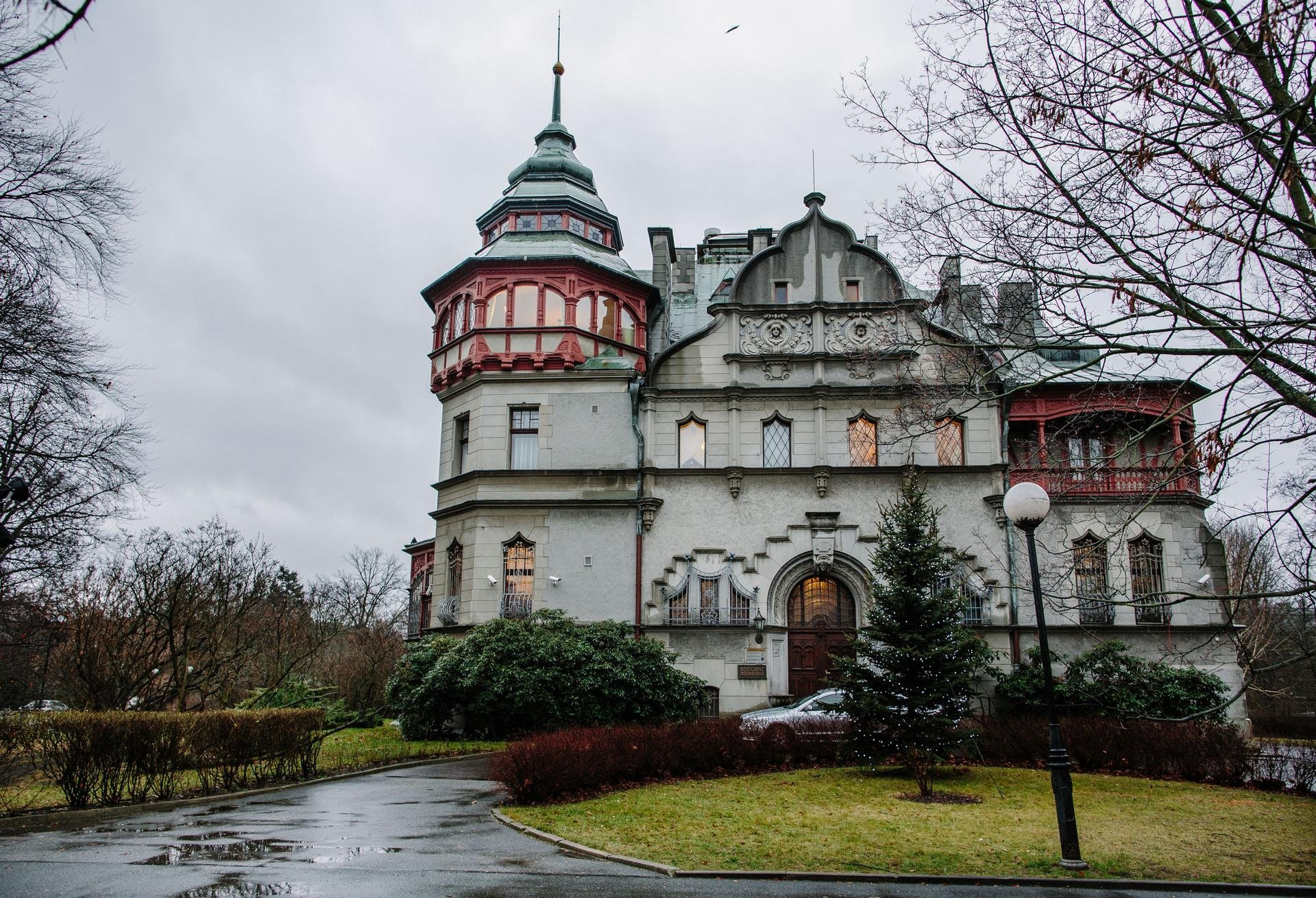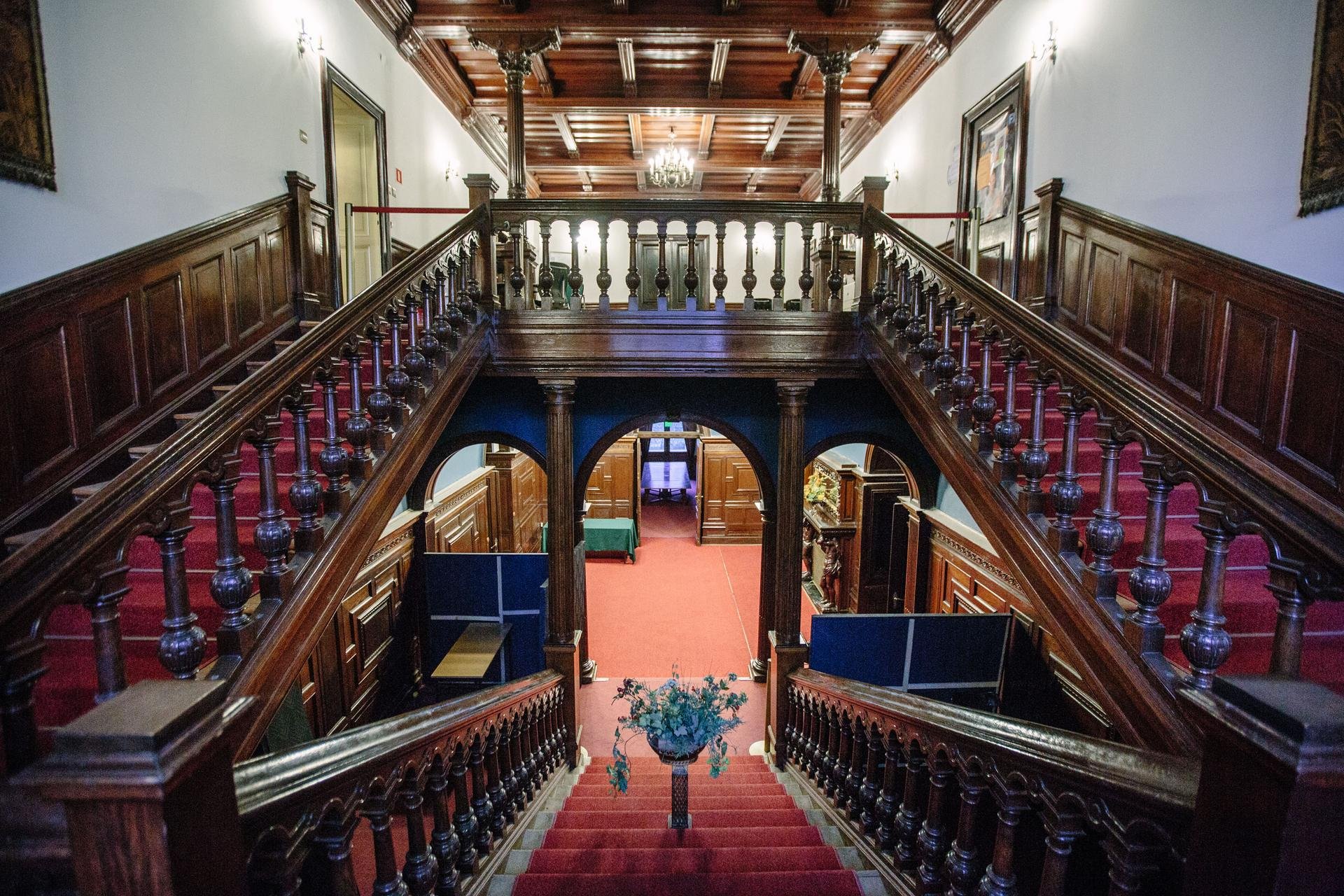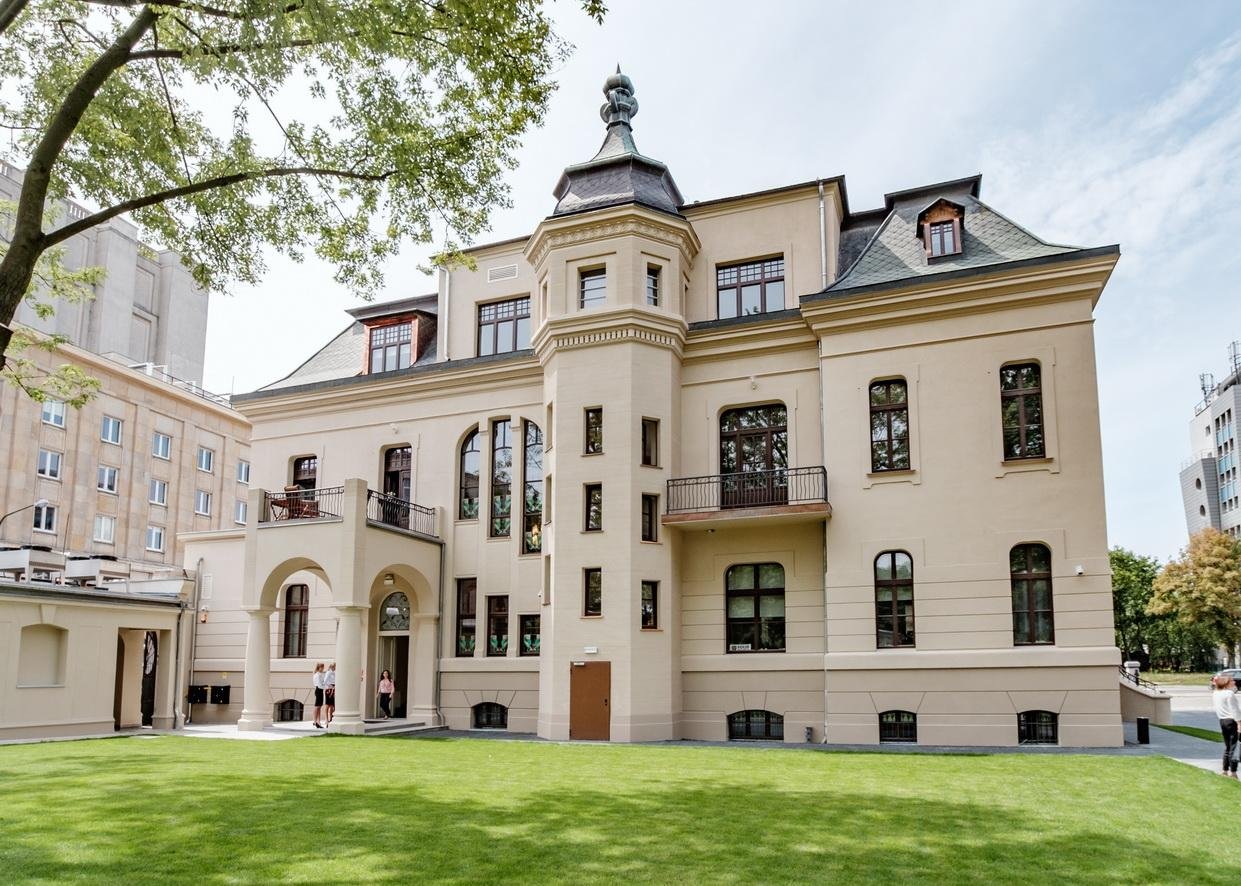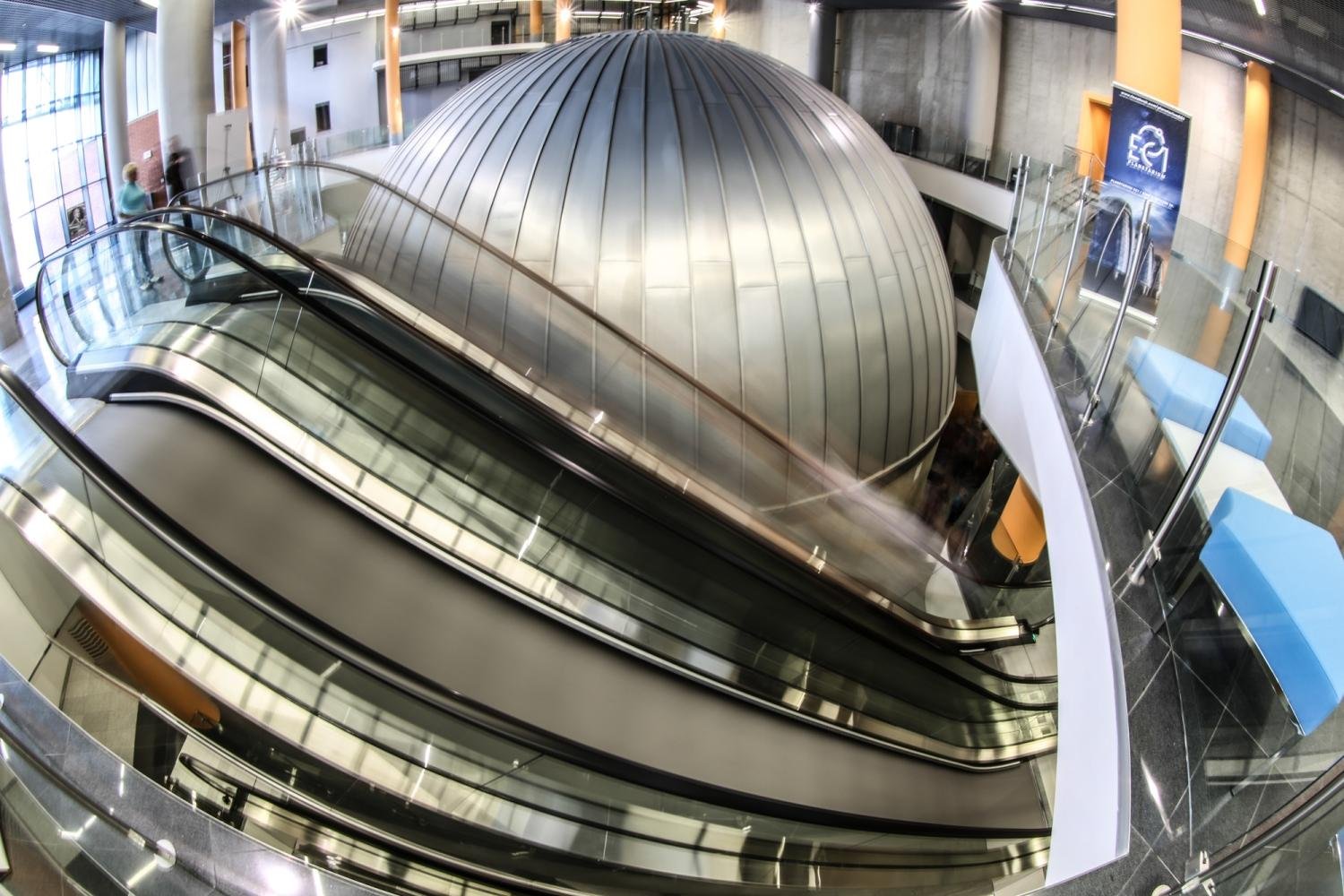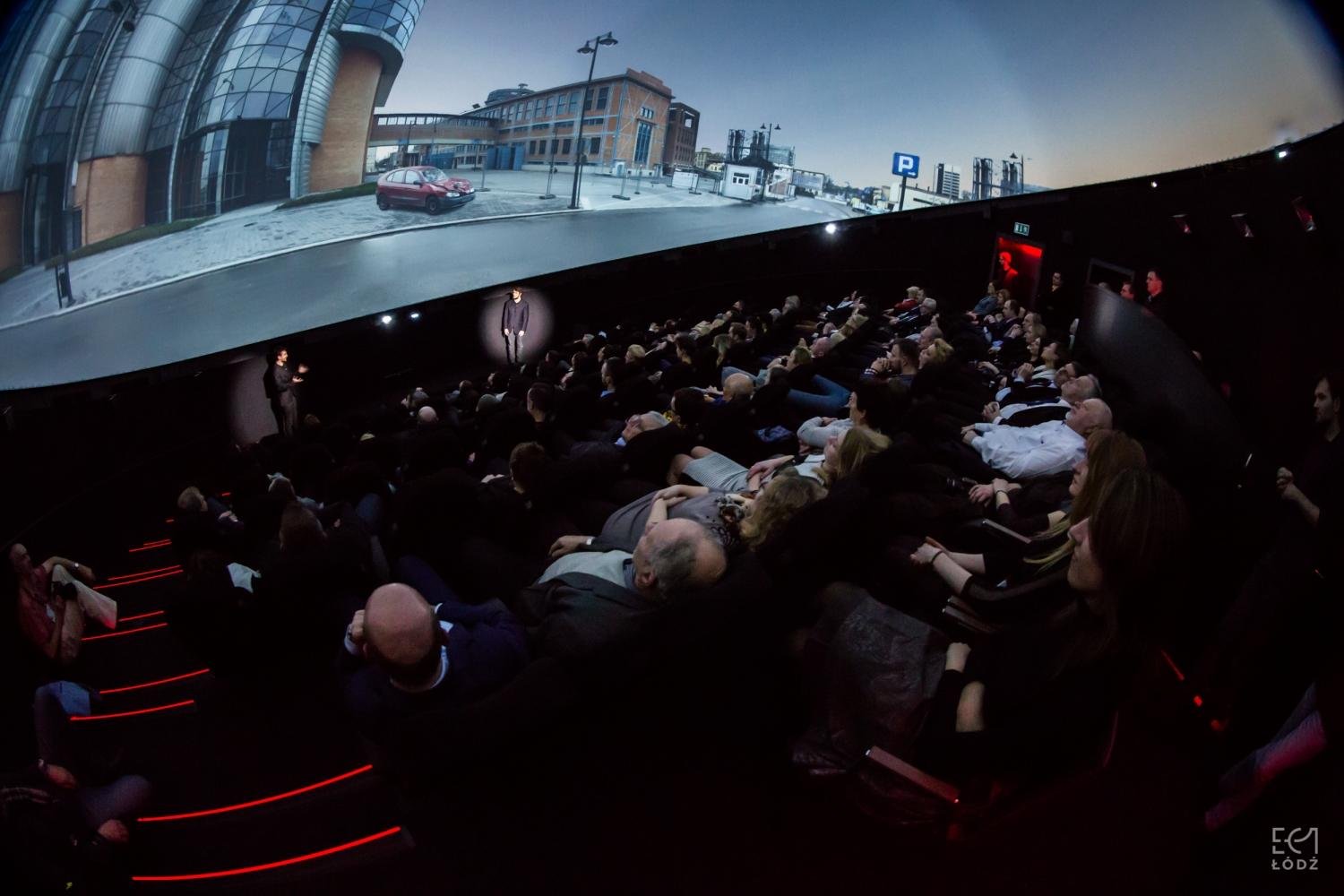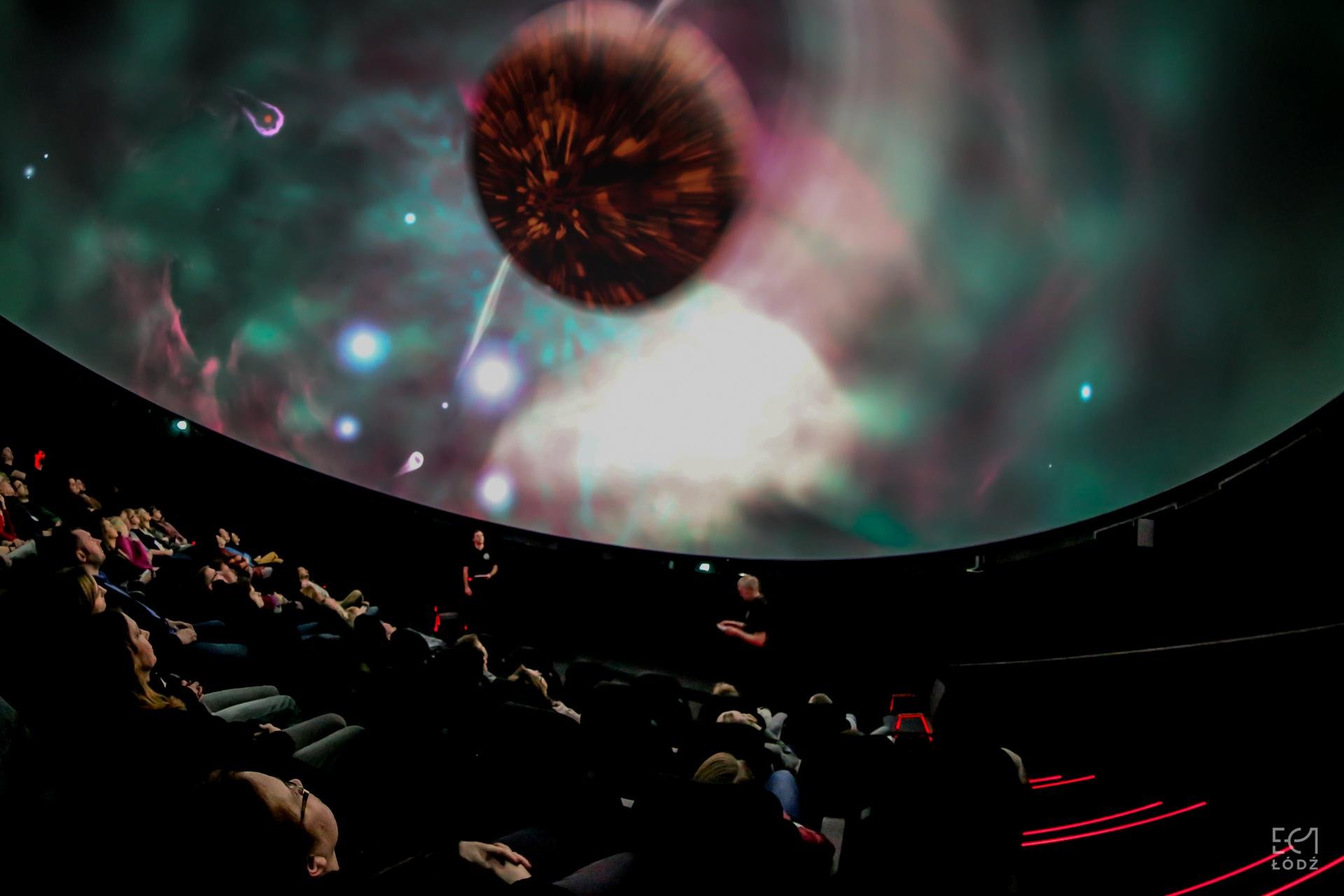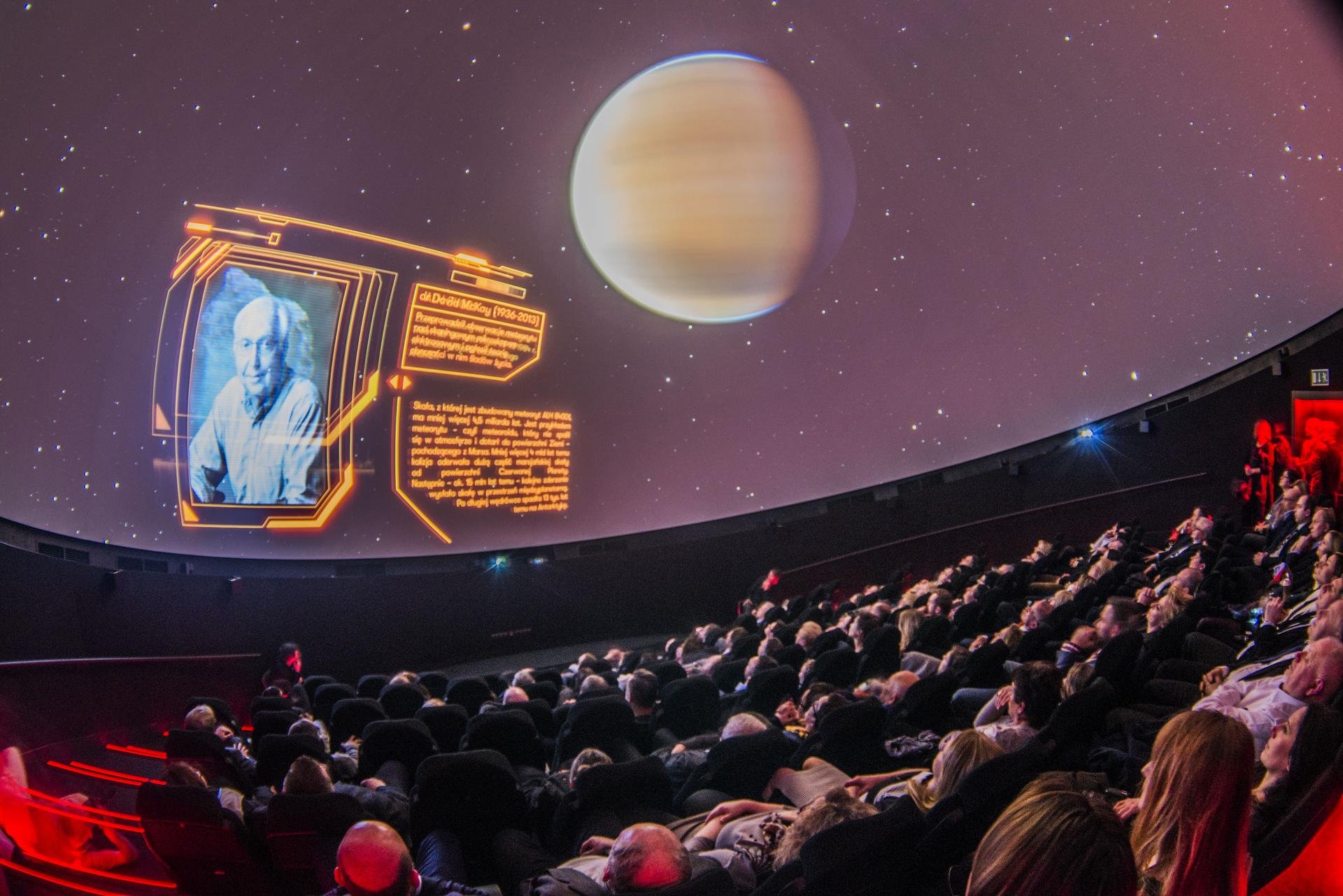TOP 15 places in Lodz, worth seeing
Piotrkowska Street
Piotrkowska Street is 4.2 km (2.6 mi) long, what makes it the longest promenade in Poland and one of the longest shopping street in Europe. Due to its unique buildings, the street has been entirely inscribed into the register of monuments. Along the street, there are old houses, industrialists’ palaces and villas, churches and memorials including Gallery of Great Citizens of Lodz (Julian Tuwim’s bench, Artur Rubinstein’s piano, Władysław Reymont’s trunk and others). There are also monuments: Lodz Citizens of Millennium Change, Lodz Citizens of The New Millennium, Lodz Identity in the shape of thousands of setts with cast iron tables commemorating names of donators. The most convenient way of moving along the street is rickshaw.
Księży Młyn
A well preserved residential and industrial complex founded in the 19th century by Karol Wilhelm Scheibler, the richest industrialist of Lodz. It is a company town within the city, including factory buildings, terraced houses for workers (so-called famuły), shop (so-called konsum), school, two hospitals, fire station and gas works building. The main part of the settlement is located between Tymienieckiego, Przędzalniana and Fabryczna Streets. The entire complex is inscribed into the register of monuments.
Manufaktura
A shopping & entertainment centre, located in former Izrael Poznański’s factory complex. The 27 ha (67 ac) area comprises such places of interest as the market place with the fountain, Museum of the Factory, ms² Museum of Art, restaurants, more than 250 shops, discos, bowling alley, climbing wall, cinema, theatre and hotel. The centre has won many national and international awards for successful revitalization of a former factory complex.
58 Drewnowska St., entrance from Ogrodowa St. and Zachodnia St.
Palace of I. Poznański
The eclectic palace of Izrael Poznański is the largest industrialist’s residence in Poland. Noteworthy are both representative interiors, such as dining room and ballroom, and exhibitions of the Museum of Lodz City housed in the palace. For instance, the Pantheon of Great Citizens of Lodz presents profiles of famous people connected with Lodz: Władysław Reymont, Julian Tuwim, Jerzy Kosiński, Karl Dedecius, Aleksander Tansman, Jan Karski, Marek Edelman & Alina Margolis and Artur Rubinstein.
"Inner Tube" Museum of Canal
One of the most unusual museums in Poland is hidden under Wolności Square. It is located in a part of the underground sewerage system designed in the beginnings of the 20th century by an English engineer William Lindley. A walk through the red brick tunnel gives an idea how the undergrounds of Lodz look. A few people know that the water supply and sewerage network of Lodz comprises nearly 4,000 km (2,485 mi) of such canals!
Museum of Art & ms2
The Museum of Art owns one of the most interesting and richest collections of the 20th and 21st century art in Europe. The exhibition includes the priceless International Collection of Modern Art, initiated by artists of the a.r. group: Władysław Strzemiński and Katarzyna Kobro and created through their donations. There are also works by such creators as Pablo Picasso, Witkacy, Magdalena Abakanowicz, Jerzy Nowosielski or Jerzy Duda-Gracz presented. The Museum of Art is housed in Maurycy Poznański’s palace (36 Więckowskiego St.) and its branch ms² is located in the Manufaktura centre (19 Ogrodowa St.)
Murals
Lodz murals - large-format graffiti which already grew into the city landscape and changed the face of Lodz. They are known and admired not only in the country but also world-wide. Over 70 murals appeared in Lodz until now. Much of them were created during Urban Forms Gallery festival which is among the five major street art festivals in the world.
Well-known people from Lodz
Many famous people were noted in the history of Lodz. For example A. Rubinstein – the pianist, J. Tuwim – the poet. Wł. Reymont – the writer, author of the splendid book “Promise land”, laureate Nobel Prize contributed to the world notability of Lodz. Monuments which commemorate famous people related with Lodz are located along Piotrkowska St.
Museum of Cinematography
The only museum in Poland, that documents the history of cinema. It has an impressive collection of cameras, camcorders, projectors, film set designs and memorabilia of creators of Polish cinema. The most valuable exhibit is a photo-plasticon (stereoscope viewer) built around 1900 in the workshop of the inventor and constructor of that device - August Fuhrmann. It’s his only photo-plasticon in Poland and one of five throughout the world. The museum is housed in the former palace of Karol Scheibler, known as the King of Cotton. In the former carriage house, Kinematograf cinema has been established. The cinema promotes ambitious films hard to be seen anywhere else.
Art Nuveau
Lodz is famous for Art Noveau architecture. Art Noveau ornaments (floral and animal motifs) adorn not only former residences of industrialists or apartment houses, but also industrial buildings. The city holds dozens of buildings representing that style (in some cases art noveau is present only in architectural details), located mostly at Piotrkowska Street and its vicinity. The most beautiful example is Leopold Kindermann’s villa (31/33 Wólczańska St.)
Jewish Cemetery
The Jewish Cemetery at Bracka St. is one of two Europe’s largest Jewish necropolis. It covers an area of nearly 40 ha (99 ac). It’s estimated that about 180,000 people is buried here. The cemetery has been established in 1892. Many distinguished people, who contributed to the city development, rest there in peace – rabbis, owners of factories, doctors, politicians. Izrael Poznański’s mausoleum is known as the biggest Jewish tombstone in the world.
Łagiewnicki Forest
One of the biggest municipal forests in Europe. It covers an area of about 1,200 ha (2,965 ac). It is a remnant of former Lodz Primeval Forest which existed in the present Lodz and its surroundings until 200 years ago. The most valuable part of the forest is protected as a natural reserve. Bzura river has its springs here and little further down, in Arturówek, it creates three major basins - Lodz’s largest recreational centre with landing stages for kayaks and rowboats. In the forest, there are two wooden baroque chapels: St Roch & St Sebastian’s and St Anthony’s (75 Wycieczkowa St.). The latter one is the oldest building of Lodz. Inside the chapel, there is a well providing spring water, which is considered to be miraculous.
The White Factory
Built between 1835-1839 in the classsical style for Ludwik Geyer, Lodz’s greatest tycoon of that time. In 1839, as the first textile plant in Lodz, it was equipped with a steam engine. Nowadays, the building houses Central Museum of Textile Industry, which is famous for organizing the International Triennial of Tapestry – the oldest and greatest world exhibition of contemporary textile art. Next to the factory, there is Open-Air Museum of Wooden Architecture, which presents examples of wooden buildings, that preserved in Lodz from the 19th century.
Industrialists’ villas and palaces
Compared to other Polish cities, Lodz stands out with a great number of palaces and villas. There are more than 200 such objects. All of them were built in the 19th or early 20th century and almost all belonged to owners of factories. Some of them are huge, majestic buildings, when other are modest and not so big. They represent different architectural styles. Former palaces serve today as seats of offices, institutions and museums. Herbst Palace - a branch of Musum of Art is an illustrative example of wealthy factory owner’s residence with antique furnishings. The most beautiful villas and palaces create a tourist trail.
Planetarium
EC1 Lodz is located in a former electric power plant. West part is the future Centre of Science and Technology. East part is adapted to suit their new functions in order to promote culture. In former Machine Hall concerts, conferences are held. The main attraction of the complex is the most modern Planetarium.
